India part 3: Four days in Mumbai, the city of maximum contrasts
Megacity Mumbai: Between slums and skyscrapers (58)
Mumbai is as colorful and bombastic as Bollywood films. It's a rush of heat, it’s overwhelming, a lack of space and a city for the restless and the dreamers. Mumbai vibrates day and night and the metropolis of millions seems to have thousands of faces and contradictions at every turn. Mumbai is India in a kaleidoscope - the many facets of the country are reflected in this sprawling city with its typical Mumbai spirit, this wild energy. It’s quintessentially Indian and yet a city of the world.
If the urban area were considered an island, Mumbai would be the most populous island in the world. Well over 22 million live in Maharashtra's capital, which is connected to the mainland by numerous bridges. More than half of the inhabitants live in informal slums. Next to them are fancy skyscrapers made of glass and concrete for the rich and the Bollywood starlets at rent prices similar to those in European cities. There’s relics of old colonial and more than a dash of Bollywood. The city is a magnet for day labourers and fortune seekers who flock to the city from all parts of the country. Every day, hundreds of people move here in the hope of a better life. The city a shining star from a Bollywood film and promise of happiness for many.
The former Bombay is now a cosmopolitan metropolis and the financial and economic centre of India. Half of India's foreign trade is shipped via its largest port and the "Bollywood dream factory" is one of the largest film industries in the world. More millionaires live in the city than in all other Indian cities combined. The city knows the extremes. For some, visits to the beauty clinic and detox smoothies are part of everyday life, while others search for recyclable material at rubbish dumps and have to fight for survival every day. Despite all the contrasts, Mumbaikers love their city and wouldn't want to live in any other place in the world, and visitors do the same or try to get away as quickly as possible from the crowds, the humidity and the manic traffic.
We only planned four days for the city, far too little, of course, but still it was enough for a few rambles and stories from this city and we’re now taking you with us on a full day of exploration.
Following in the footsteps of Shantaram
It's early in the morning and we leave our accommodation in the tourist district of Colaba. This is where every first-time visitor first sets foot in the city, where you’ll find an abundance of tourist shops, the Gateway of India, the iconic Taj Mahal Palace Hotel and the famous Leopold Cafe, known from the novel Shantaram, are located. Probably few travellers to India haven’t been fascinated by the protagonist Lin Ford and his adventures in Mumbai. A book that sets an incomparable monument to the city. We also read the book a 2nd, respectively, 3rd time (in Lisa’s case) during this trip to India. And of course, we had to visit the Leopold Cafe with its mirrored walls, but in our view, there are better places to hang out. It’s always packed with tourists from India and all over the world and quite overpriced.
Between Colaba's tourist restaurants, junkies hang out in the darker side streets, old men sleep on thin cardboard boxes in front of the house entrances, the taxi drivers wait for customers in front of their black and yellow Ambassadors and the tourist touts try their trick on those who have just arrived, easily recognizable by their jeans and still tentative gait. I used to look the same, when I took my first hesitant steps through India 15 years ago and stayed in a huge dormitory at the Salvation Army’s Hostel in Colaba. Memories come flooding back of those long-gone days as I stroll with Dario through the empty streets of Colaba in the early hours of the morning.
The early bird catches the fish
Only a few people are out and about at this time of day, they are mainly walkers and runners who don’t meet at the local coffee haunt, but at the coconut seller around the corner. We join them right away and start the day with a fresh coconut. The sweat is already pouring down at seven in the morning, it’s sweltering hot in Mumbai. We haven't experienced temperatures like this in Delhi and Rajasthan in the last few weeks and we have to get used to it first. Welcome to the south of India. We continue walking and pass a cow, a rare sight in Mumbai, as there are hardly any cows on the streets in the bigger cities of India. This one is standing next to its owner and a huge bundle of grass, waiting for passers-by to buy its feed. Feeding cows for karma is business as usual in India.
Our destination is the fish market at the Sassoon Dock south of Colaba. Especially in the early morning, there is a hustle and bustle here and no sense if left unaffected at the atmospheric fishing docks, dating to 1875. It’s the oldest and largest wholesale fish market in the city. The men return with the rattling fishing boats and fillet huge fish with their machetes, while all around cats and dogs cavort and the birds make a deafening noise. The Koli women, the old fishing community, sit chatting on the ground with steaming chai, gutting the fish and selling the catch of the day. Piles of pomfret, blue crabs, salmon, red snapper, tuna and sting rays are hawked. Families come here to stock up on fish for the next week and hotel staff order big quantities of seafood for the surrounding hotels.
Back in Colaba, we sit down in an elegant café, read a newspaper and start the day in a European way for a short while before continuing our foray through the city of extremes. The density of restaurants and bars in Colaba is enormous and you could spend a lot of money here if you wanted to.
Sunday midday in Mumbai
We walk past Victorian colonial buildings that immediately transport us to England. In the second half of the 19th century, many public buildings such as banks or universities were built in the Victorian-Gothic style and at the beginning of the 20th century, Art Deco buildings were added. Actually Mumbai has the 2nd largest collection of Art Deco buildings after Miami! This unique Indo-Gothic-Déco style spread from here across the entire Indian subcontinent and is now a UNESCO World Heritage Site. It's getting oppressively hot and we need to cool down, so we hurry to the next museum. We immerse ourselves in history in the magnificent Princes of Wales Museum (or the tongue twister version of it: Chhatrapati Shivaji Maharaj Vastu Sangrahalaya). It’s Mumbai’s biggest museum and displays a mix of India-wide exhibits with impressive Hindu and Buddhist sculpture, terracotta figurines form Indus Valley and miniature paintings.
We stroll to the huge Maidan, a shadeless grassy area in the midst of British colonial splendor. It's surprisingly busy here on a Sunday and we have to make sure we don't get hit by a ball. It seems like every cricket club and amateur player is gathered here today. There is the grandfather throwing the ball with his grandson, there are the more professional players with their sport jackets and in between there are giggling teenage girls watching the strong boys. It’s a great spectacle. But we have to admit, we don't know the rules and we don't know any of the famous cricketers, although that would be the ultimative start for a conversation in this part of the world.
We quickly duck our heads and continue to the Gateway of India, the city's most famous monument. The colonial triumph by the sea is the gateway to the city. Visitors are ushered through entrances and there’s a massive crowd. In the past, the monument was more freely accessible. The Gateway of India was built by the British in 1911 for King George V's very first visit. Ironically, the British builders used it in 1947 to parade the last British regiment as India marched towards independence. Just behind the Gateway of India, is the iconic luxury hotel Taj Mahal Palace, which was completely restored after the terrorist attacks of 2008. It was the first hotel in India to employ women as staff and even if you don't stay there, you can enjoy a drink at the bar or stop by for an opulent breakfast.
Intricate stone carvings on Elephanta Island
Together with many others, we take the ferry in front of the Gateway of India and leave for the UNESCO World Heritage Elephanta Caves. Created between AD 450 and 750, the labyrinth of cave temples represent some of India’s most impressive temple carving. The main Shiva-dedicated temple is an intriguing latticework of courtyards, halls, pillars and shrines. When visiting the caves, you just have to be careful that the monkey gang doesn't steal any snacks from your pockets, as those monkeys in India generally aren’t sweet, but rather cheeky.
Bazaar life and the largest open-air laundry
After our trip to the Elephanta Caves, we take the crowded suburban train a little further north and roam through residential and bazaar neighbourhoods. Crawford Market sells a wide range of things, from pyjamas to pets. The locals stock up on fresh fruits and vegetables and the tourists on exotic spices. Again and again, we are asked if we are interested in saffron and pashmina (cashmere) shawls. Obviously the most popular products with foreign tourists in the eyes of Indian sellers. We have to smile every time someone with shining eyes stands in our way and asks: "You're looking for saffron, yes?"
No, we aren’t looking for anything. We just want to take in all the hustle and bustle and let this city captivate us for a few hours before all the intensity becomes too much and we have to retreat immediately.
We continue our walk and observe everyday life, which in India often takes place mostly outside. People cut their hair, brush their teeth and, of course, wash their clothes outside. The Mahalaxmi Dhobi Ghat is the world’s biggest human-powered washing machine. Every day hundreds of people beat the dirt out of thousands of kilograms of soiled Mumbai clothes and linen. The huge laundry with a carpet of white linens hung up to dry provide an extreme contrast to the luxurious high-rise buildings in the back. Individuals, hotels, restaurants and hospitals let their laundry be washed and returned spotlessly clean by the “Dhobis”.
More than five thousand men wash sheets, pillows and shirts with their bare hands. It’s a caste of its own that works here and the laundry is a world apart. The men collect the laundry and then soak it in the rented troughs. Afterwards, the clothes are scrubbed and beaten ruthlessly, then rinsed again; hung up to dry and brought into shape by a bulky charcoal iron. The water in the troughs has an irritating color and it reeks of caustic chemicals that can cause burns and injuries. Dhobis who can afford to rent one of the more than 800 pools on the premises are hired by other washers. They earn around two to three dollars a day for the hard manual labour, depending on how fast they work. Those who make it to the top can rent such pools themselves and no longer have to stand knee-deep in soap.
Tons of laundry are handled every day and nothing goes missing. The system is unbelievably efficient and, like the lunchbox delivery people, the dabbawallas, is simply part of Mumbai. We’re taking a short tour with a local guide and are shown the different parts of the laundry and also see the conditions under which the employees live with their families. They come here from other states and live in narrow corrugated iron huts in the laundry or in the adjacent slum. Some of them live in small, windowless rooms and others simply at their workplaces without any possibility to retreat. There is also a school here for the children of the launderers. The whole life takes place in the microcosm of the open-air laundry. Although the Indian caste system has become more permeable in recent years, launderers and other low castes are still often denied professional and social advancement. We would like to gain more insight into the different worlds of Mumbai and visit Dharavi.
Dharavi: India’s one-billion-dollar-slum
We discussed for a long time whether we would like to visit a slum on a guided tour. We don't want to visit slums to see any clichés confirmed and then write excitedly about how bad the conditions are and how surprised we are by them. That’s not us. We don’t want to show poverty, but instead opportunities in places you wouldn’t think of in the first place and that’s what attracted us to Dharavi, as it’s different from other slums and probably nothing similar can be found anywhere else in the world.
The inhabitants of Dharavi have created the unbelievable: Between the simple huts there are about 15,000 mini-factories that generate a combined revenue of about 665 million to 1 billion US dollars annually. That’s a staggering amount coming from a slum.
We are interested in this and also how living together in such a densely populated area works. After a long discussion, we finally decided to join a 3-hour tour of Dharavi with Reality Tours & Travel. We chose this organization because 80% of the income goes to the NGO, which offers free English and computer courses in the middle of the slum. Moreover, no photos are tolerated during the tours, which we prefer. The pictures in this part of the blog are therefore provided by Reality Tours & Travel.
We decide to visit the slum Dharavi and those who expect only poverty and lethargy will quickly learn otherwise. Everyone seems to be busy in the city's most productive slum. In Dharavi, pottery is made, leather is manufactured, food is produced and, above all, plastic is recycled to be melted down into micro-parts, which can then be reused for washing machines and the like. Rubbish collectors roam the city's rubbish heaps and roadsides every day with large collection bags and bring the collected goods to the slum. Then it is sorted, sorted by color, melted, shredded and the end product is sold to plastic processing companies until it finally ends up as toys, television housings, etc. in department stores worldwide. An eternal cycle. No one knows how many micro-enterprises actually exist in Dharavi.
Most of the workers in those tiny factories come from the poorest areas of India and can only see their families one a year. Many can’t afford a flat in the slum and have to live and sleep on the bare floor. The working conditions are extreme with toxic fumes in the workshops mixed with the tropical heat. Protective clothing and trade unions are non-existent.
Living and working in a densely populated place
Dharavi is the third largest slum on earth and more than one million people live together in an area of just under 2 km2. By comparison, one million people live in an area smaller than Central Park in New York and about the size of Monaco. Most of the inhabitants are Hindus, but there are also some Muslims and a few Christians living in Dharavi. Neighbours from the same villages often live next to each other and marriages take place within the same community / caste.
Dharavi is only one of many slums in Mumbai, but it received international fame through the movie Slumdog Millionaire, which was shot here. And the best-selling novel Shantaram has also made the slums in Mumbai better known, even though the plot wasn’t set in Dharavi. The protagonist of the Shantaram series, Charlie Hunnam, even joined the same tour as us in preparation for the shooting of the series. The Dharavi residents don’t like the movie Slumdog Millionaire by the way, because it portrayed just one side of Dharavi, that propagated the western notion that slums are nothing more than desperate places. That’s why Reality Tours & Travel focuses on showing a more positive side of Dharavi.
Actually, Dharavi doesn’t even officially count as a slum, as all houses built here before 1995 are considered legal. Only the illegal houses are demolished. Since the British colonial era, more and more villagers from all over India settled in what is now the Dharavi area, which is why certain houses have been here since 1860. And Dharavi is very popular thanks to its central location, so moving here is like moving up the social ladder. There are even long waiting lists to be allowed to live here. Rents range from 6000 - 20,000 Indian rupees (USD 75.- USD 250.-) per month for small flats. Income varies, of course, but for simple jobs that don't require specific skills, it's around USD 170.- per month, not exactly a lot in a city as expensive as Mumbai.
Dharavi is a city within a city, with a commercial district, crooked corrugated iron huts, houses with terraces, numerous shops, hospitals, private and public schools and what feels like thousands of small workshops. Often you don't feel like you're in a slum anymore, but rather in a typical Indian village with a village square with a banyan tree, a Hindu shrine, a well and herds of goats running around. A fat hen just runs between us, cats scurry into the entrances and only cows are missing from the picture in front of us, because they wouldn’t fit in the tiny streets. The smell of fresh food wafts over to us and we have to be careful not to step on the crispy pappadams (flat bread made of lentil flour), which are laid out everywhere to dry in the sun. The children with their neat school uniforms walk beside us and want to practice their English with us. It looks somehow like everywhere in India, only a bit more dense.
Shortly afterwards, however, the alleys become so narrow and dark that you can almost no longer see anything. No ray of light can get through and the air is stagnant. Electric cables hang everywhere and you can only move carefully and there is only room for one person at a time. There is "oncoming traffic" in the entrances to the houses. Steep stairs lead up to the flats on our left and right, it’s hard to imagine living like this. Sewage runs under the concrete slabs beneath our feet. An acrid smell hangs in the air. It smells of far too many people, far too little air and foul water. Shortly afterwards, we pass a river, or rather a stagnant cesspit, half covered with rubbish. Even today, rubbish is simply thrown in there. From time to time, residents come by with self-made Styrofoam boats and rummage for usable hard plastic for recycling. Every year, the monsoon washes the whole thing straight into the sea. In general, it’s hard to imagine the monsoon season here, when all the streets are flooded and diseases surely spread very quickly.
Everyday life in the slum and future prospects
Only 1% of Dharavi's inhabitants have their own toilet, an absolute luxury here. Many households have set up a kind of washing corner, but they still have to go to the public toilets, which they share with thousands (!) of other residents. In the morning, there are always long queues. There is electricity and water supply for about two hours a day. There are public schools, which can be attended for free and provide uniforms and lunch. But this also means that there can be up to 70 children per teacher. Fortunately, there are many organizations that offer additional free education and we support one of them by taking part in the tour. We are extremely impressed by the close-knit community here, where people meet each other in a helpful way. Many slum dwellers choose to stay in Dharavi even though they could afford to leave.
Of course, we would like to know what the future prospects are for the people in Dharavi. The central location has led to the interest of numerous investors and the Adani Group bought the slum in December 2022 and wants to demolish all the houses and build new lucrative housing in the next seven years. Dharavi now has a CEO.
The slum dwellers will be resettled and will be given about 37m2 of living space. Of course, this promises much more comfort and also access to running water and sanitation. But what will happen to all the micro-enterprises, the countless small manufactures like the potters? These jobs would be lost and probably also the strong sense of community. We ask ourselves why the working conditions of the people cannot be included in the planning of the investors. What is this all about? We will certainly continue to follow how this story develops and leave Dharavi with great humility before the people here.
Evening atmosphere at Marine Drive & Chowpatty Beach
After so many intense impressions, we need a change of pace and head for Marine Drive, the popular sea promenade with Art Deco buildings and palm trees. See and be seen across all social classes. So here they sit, the Mumbaikers, looking out at the murky sea, the skyline in the background and the horizon there. Chowpatty Beach is really crowded in the evening and many locals come here, eat a traditional Kulfi ice cream, nibble the popular snack Bhel Puri (puffed rice, chilli paste, onion and coriander) and stick their toes in the sea and sit in the sand. The dark water is not exactly inviting for a swim, yet the atmosphere here at sunset definitely evokes a holiday mood. We hear joy and laughter everywhere. A beautiful end to this day.
Between cockroaches and bodies on a crowded train to Goa
We have an idea and we’re not the only ones: We want to go to the beach in Goa over Christmas / New Year. We booked our train ticket online three months before and were put on waiting list and only today our seat numbers were confirmed. Spontaneous train travel in India is unfortunately not that easy anymore, that has definitely changed with all the online portals. In the past, you just went to the station and bought a ticket for the day of your onward journey. Good old times. Together with Melli & Dani we travel south to the beach, but first it gets really uncomfortable again. We ride our bikes to the stunning station Chhatrapati Shivaji Terminus (CST), a UNESCO world heritage site and one of the grandest train stations built by the British in the 19thcentury.
Around three million passengers are shuttled into the city every day. Every few minutes, a packed suburban train departs and long trains run from here to all parts of the country, so it's easy to spend several days on the same train.

Tips for train travel in India:
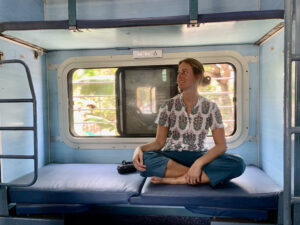
Travelling by train in India is an absolute highlight and is simply part of a journey through the country. The experience is unique and can range from a very crowded compartment with lots of encounters to a cozy ride in a private compartment with clean sheets etc.
1.) Book in advance: Depending on the destination, train tickets can be booked 3 months in advance. If the date and route are clear, we strongly recommend booking in advance to avoid surprises. Certain routes and certain dates are very, very popular. Alternatively, you can try to get a last-minute ticket online 24 hours before departure, but all the locals know about this option as well, so you better hurry.
2.) Reservation of the tickets: The tickets can be bought on the useful app Ixigo or also directly via the official site: IRCTC. But this involves a nerve-wracking registration process (it took us half a day). Registration only makes sense if you are travelling in India for a long time, otherwise we recommend booking the train tickets via a third-party provider such as a travel agency or the booking platform like 12goasia. You pay hefty fees there, but you also save a lot of nerves.
3.) Train classes: There are 8 different train classes in Indian trains, so you have to read up on them first to understand all the codes. Our tip: For night journeys book 2AC or 3AC (open AC compartments with two or three beds on each side) and for day journeys AC Chair (comfy big seats) or Sleepers Class (if you like open windows and open doors like we do). This site provides a great overview: https://www.seat61.com/India.htm.
4.) What to pack: Flip flops, socks, a silk inlet, a water bottle, ear plugs and toilet paper are a must in your hand luggage. You don’t need snacks, there are so many vendors at the stations and opportunities to buy something before departure at the larger stations. We advise top take some small change with you, if you spontaneously want to drink a chai on board.
We make our way to the luggage department and convince the staff that we want to load the bikes ourselves onto the train and leave the luggage on the bikes. As always, a tedious discussion ensues until finally everything works out. Transporting the bikes in India's trains requires nerves of steel, because the officials here are only too happy to put on airs and simply say no at first, before everything is possible after all. Well, that's India for you. Finally, the time has come and after several hours of discussion and waiting at the station, we are allowed to load the bikes and find our seats in the Non AC sleepers class. At first everything goes well and we have some space to ourselves, but with each stop new guests join us and the train is completely overbooked.
People lie between and even under the seats, cockroaches crawl through the hair of those lying down and the walk to the toilet at the end of the carriage becomes a spit-route, where you have to somehow squeeze or shimmy your way between the bodies. We decide from now on to book night trains only in luxury class, because it’s definitely no fun like that, even if it’s experience and a good story, but we feel a little to old for this.
The next morning, we arrive in the hinterland of Goa at a small train station. Completely exhausted, we get up and ride for the last 30 km to the sea, where we will spend the next six weeks - a new chapter of India is about to begin.

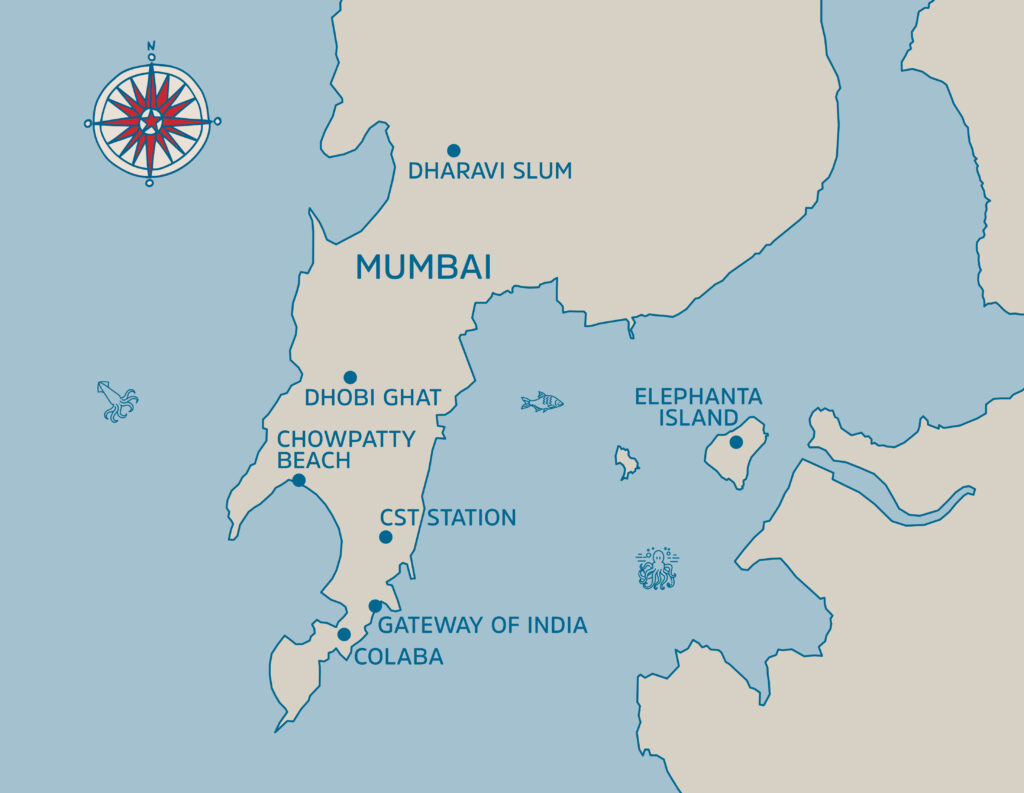
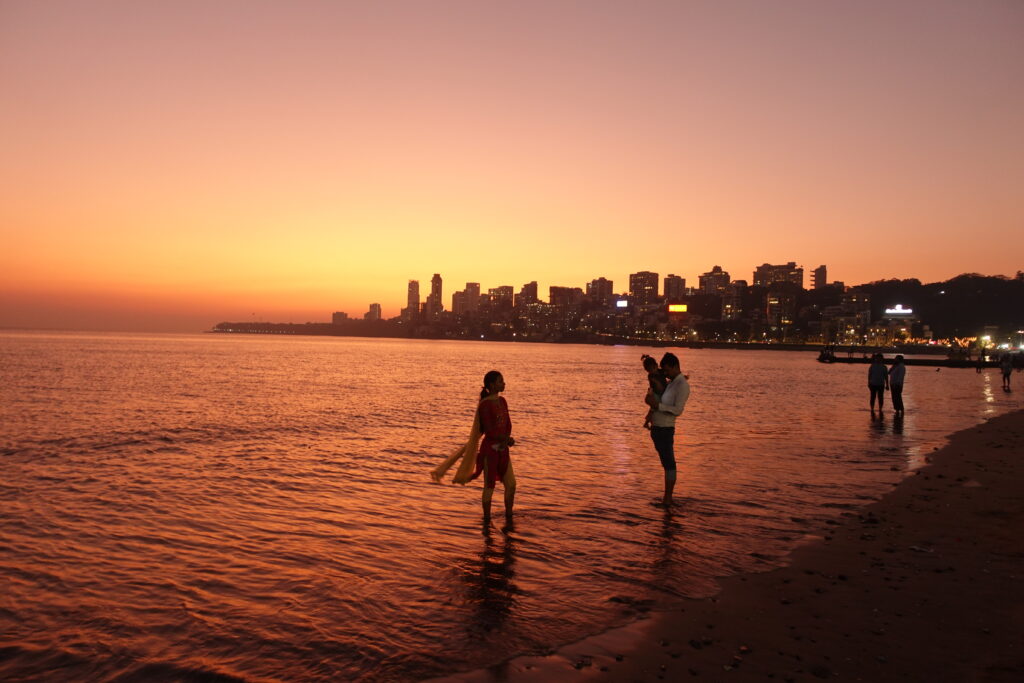
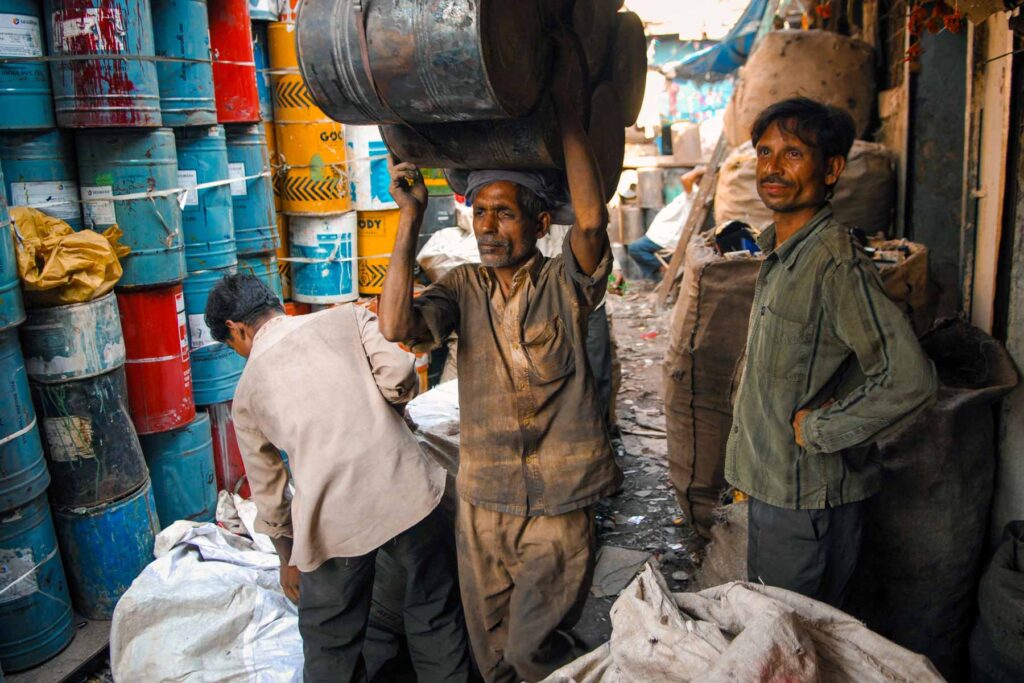

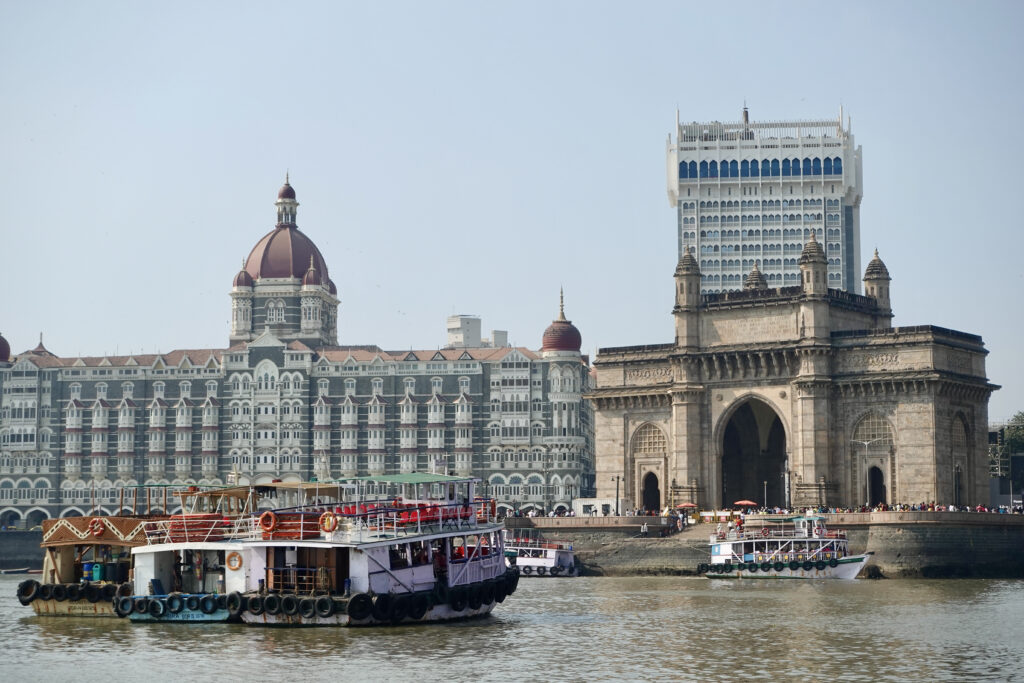

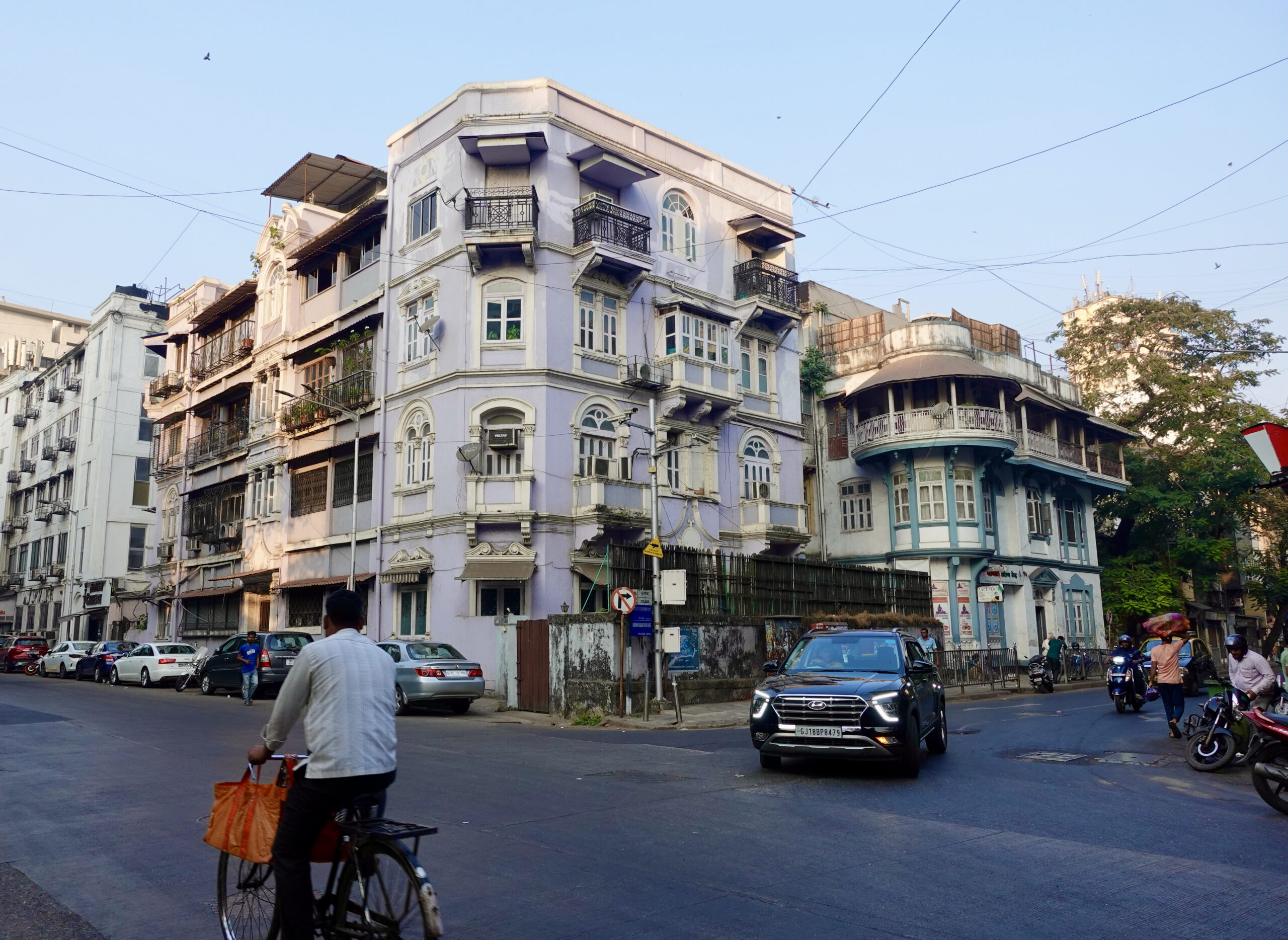
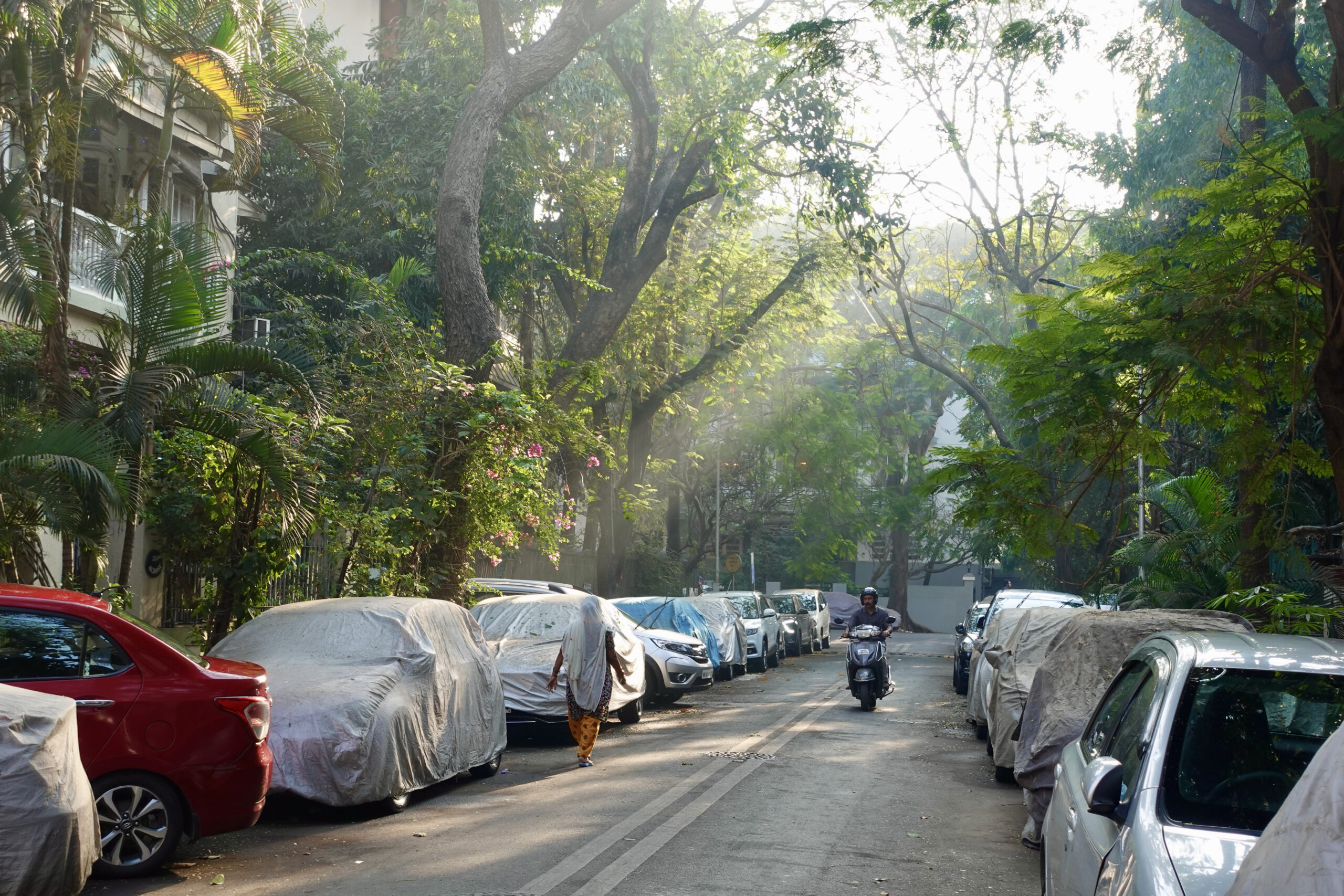


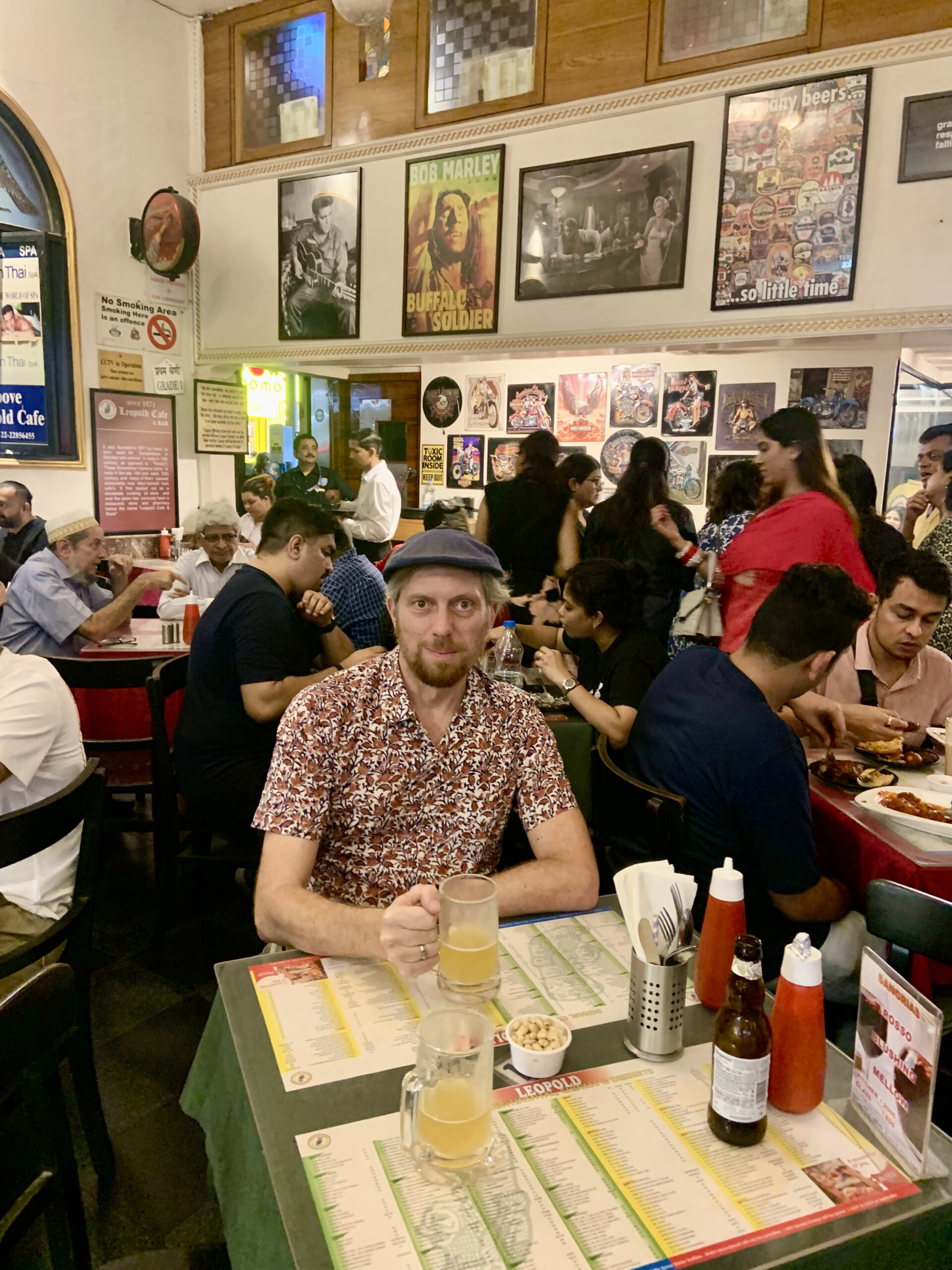
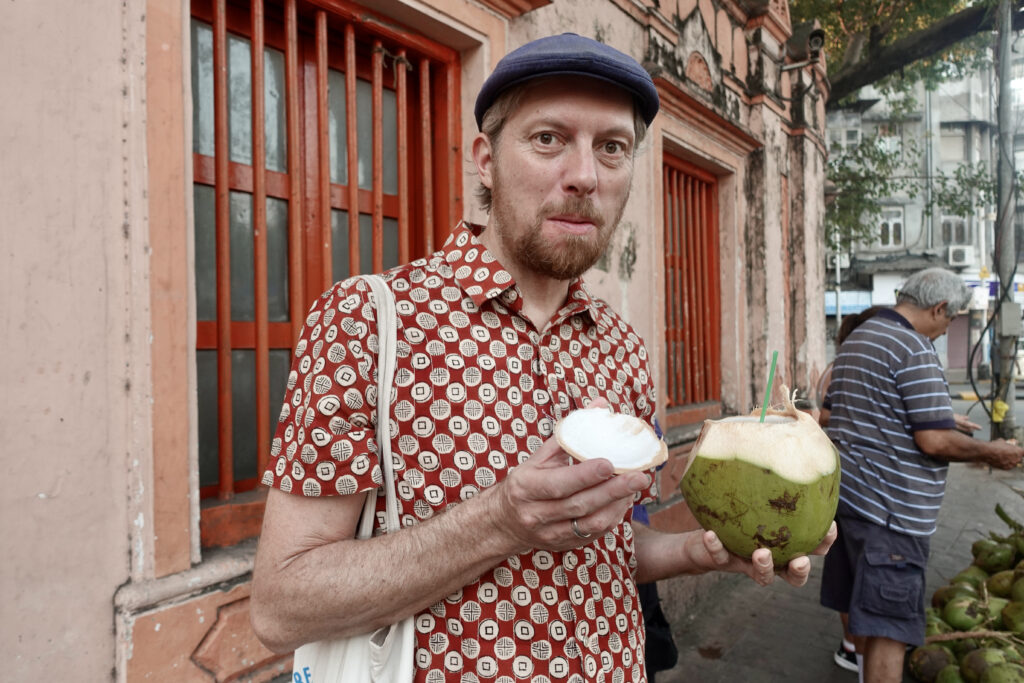


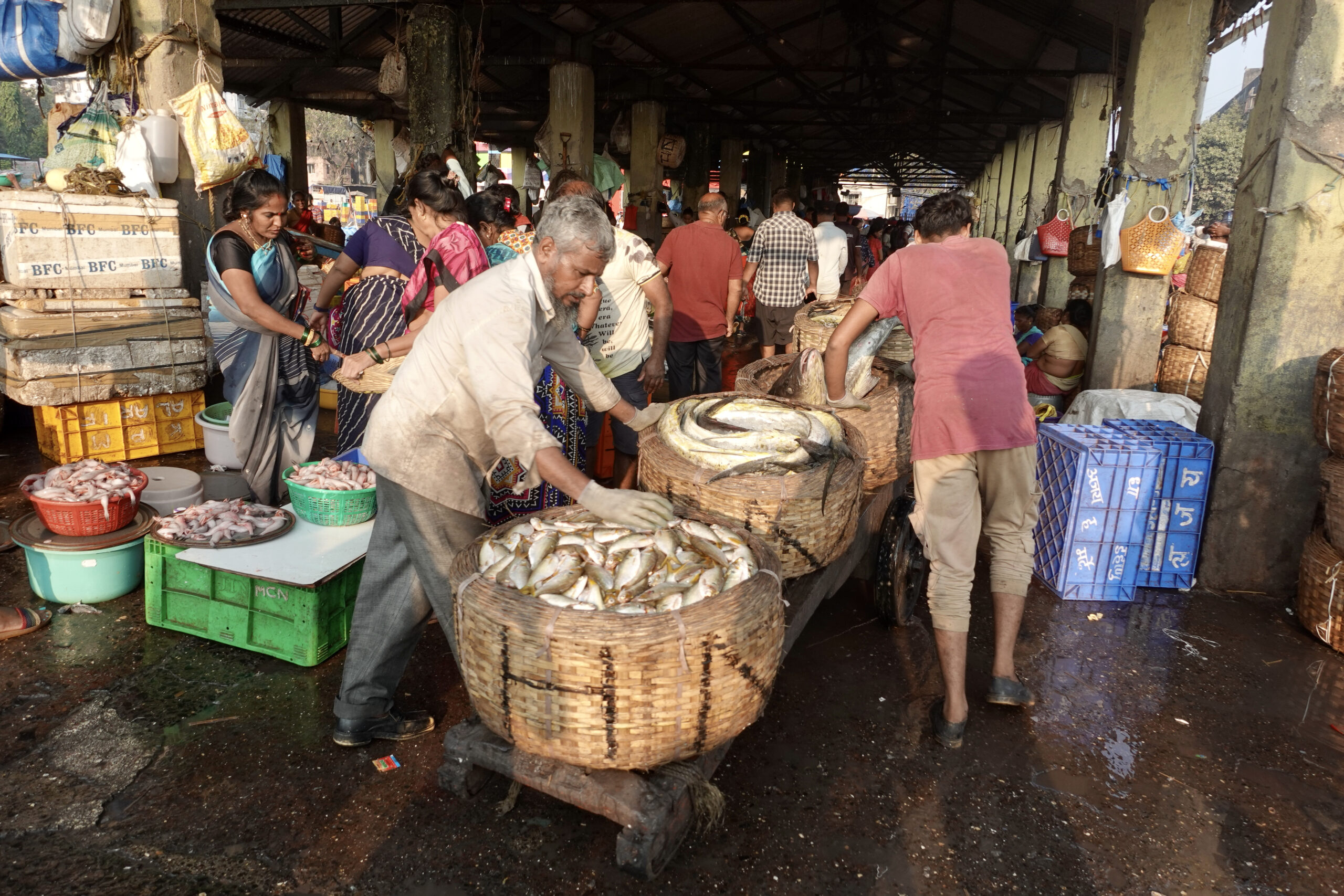
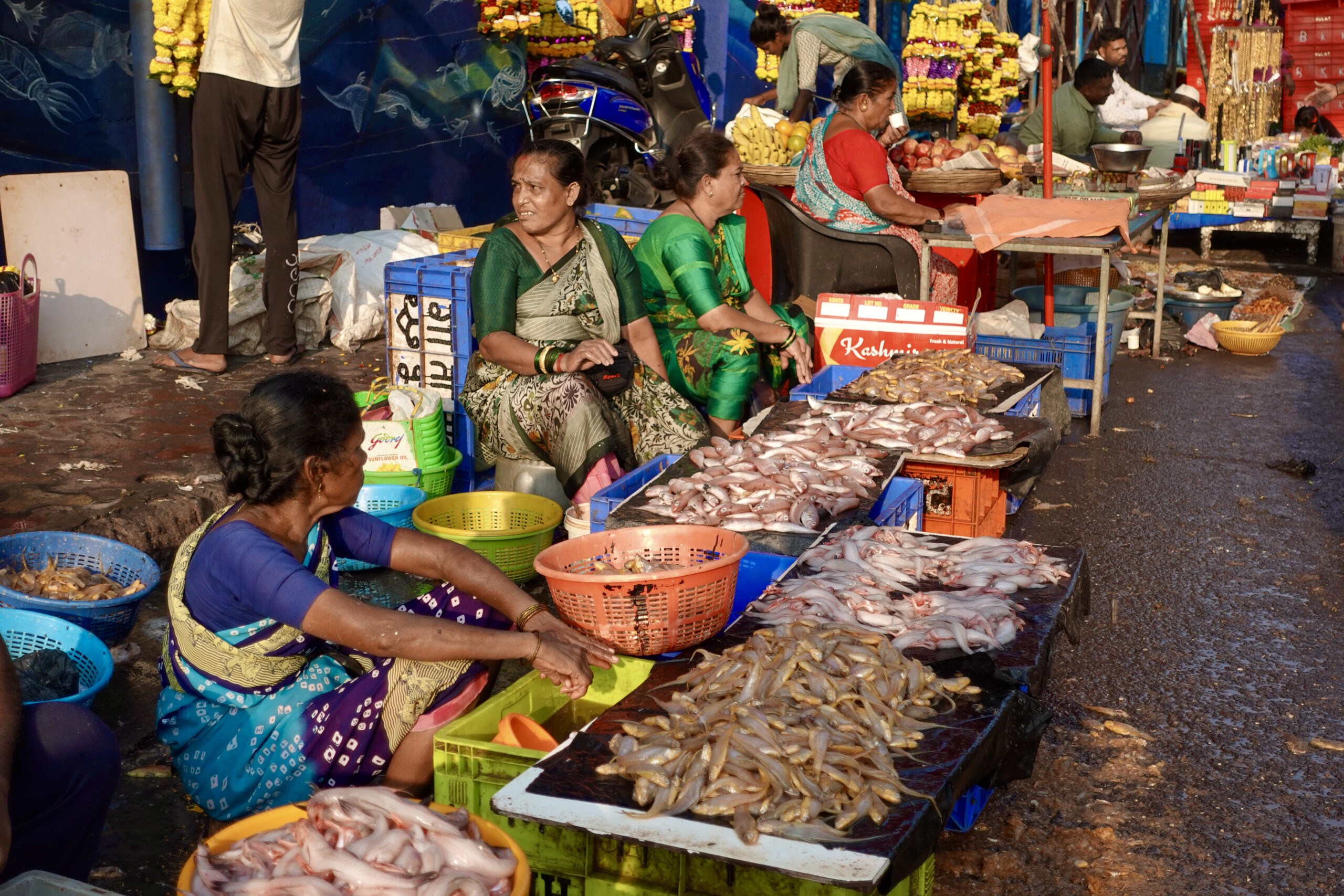

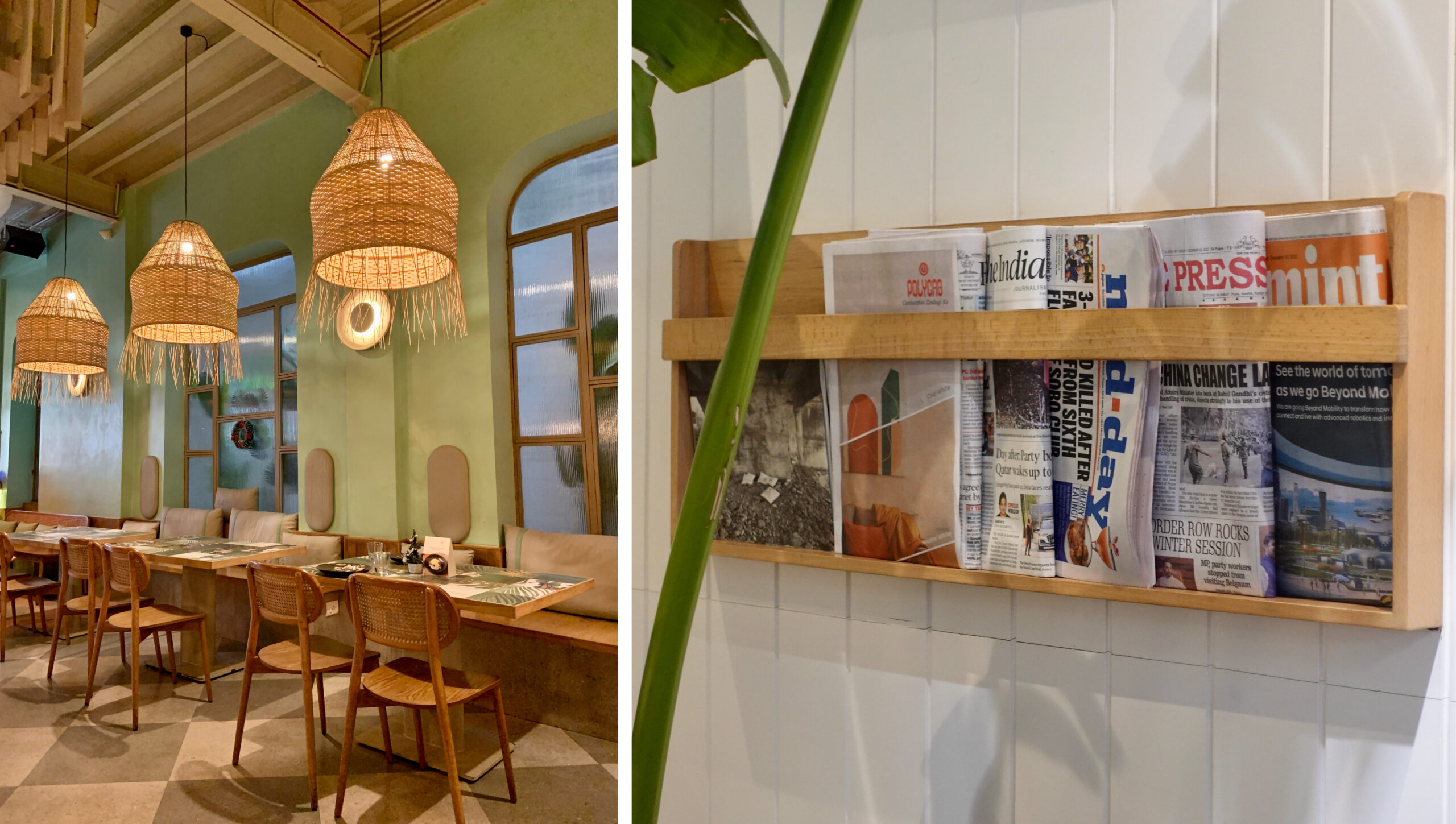
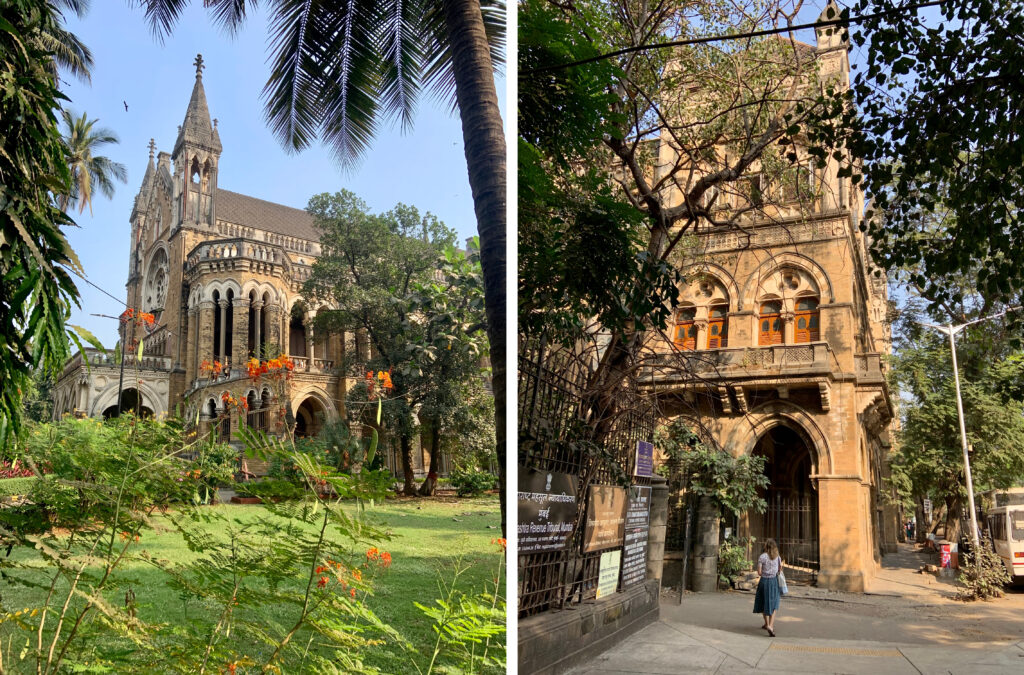

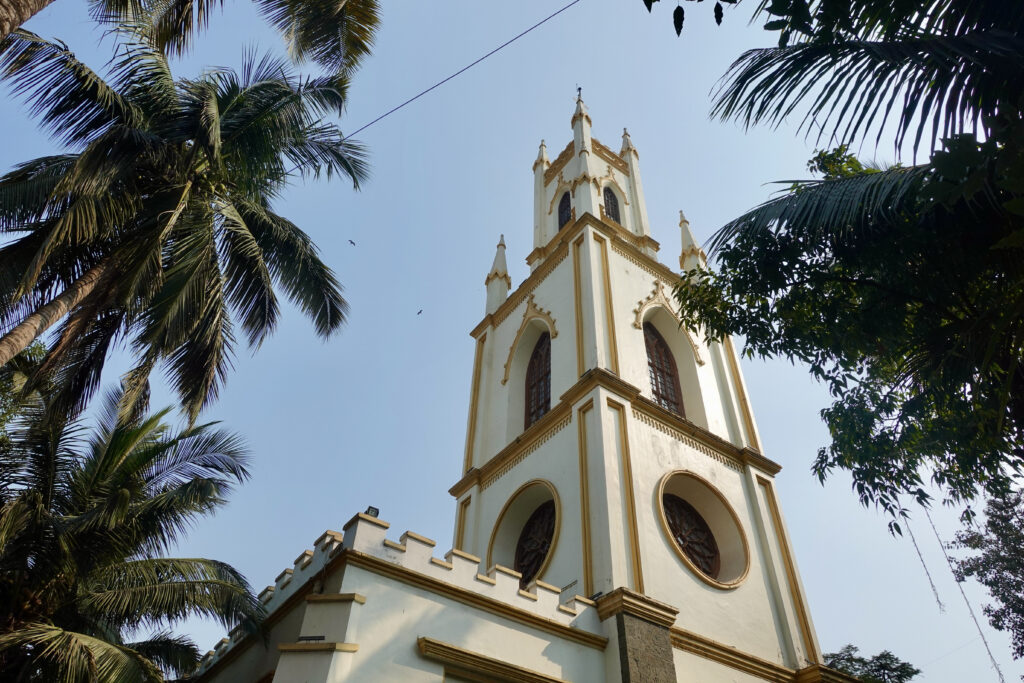
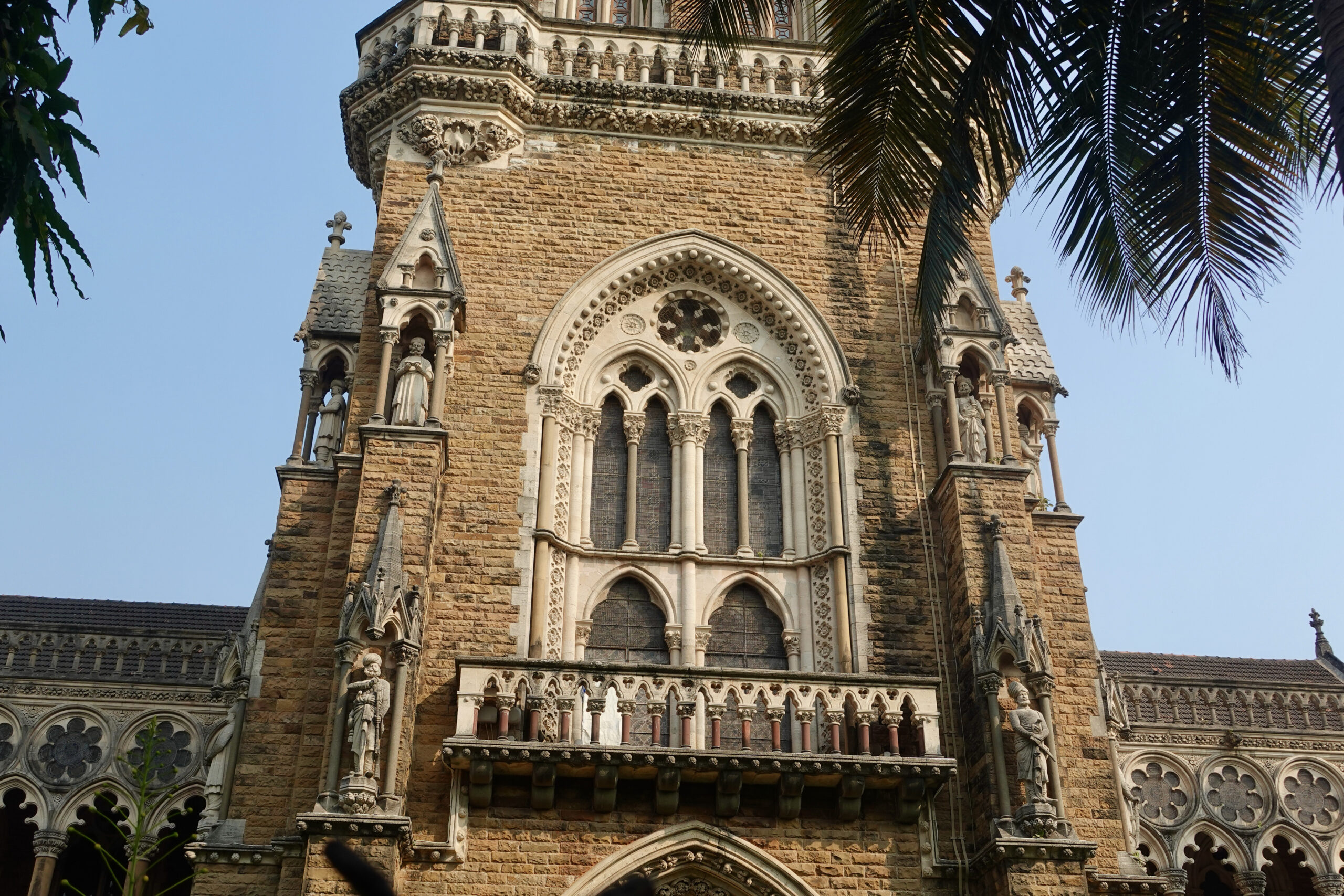
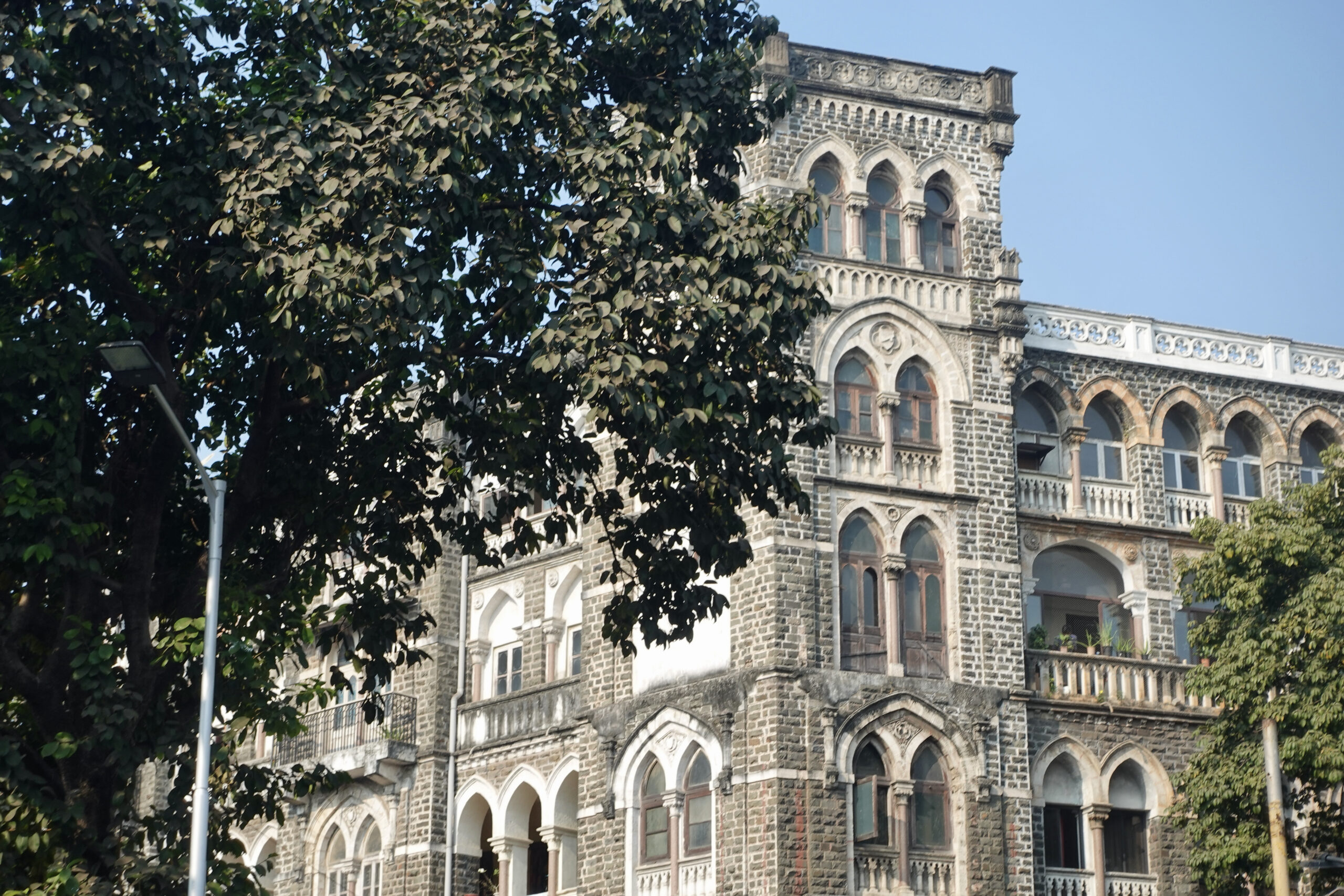
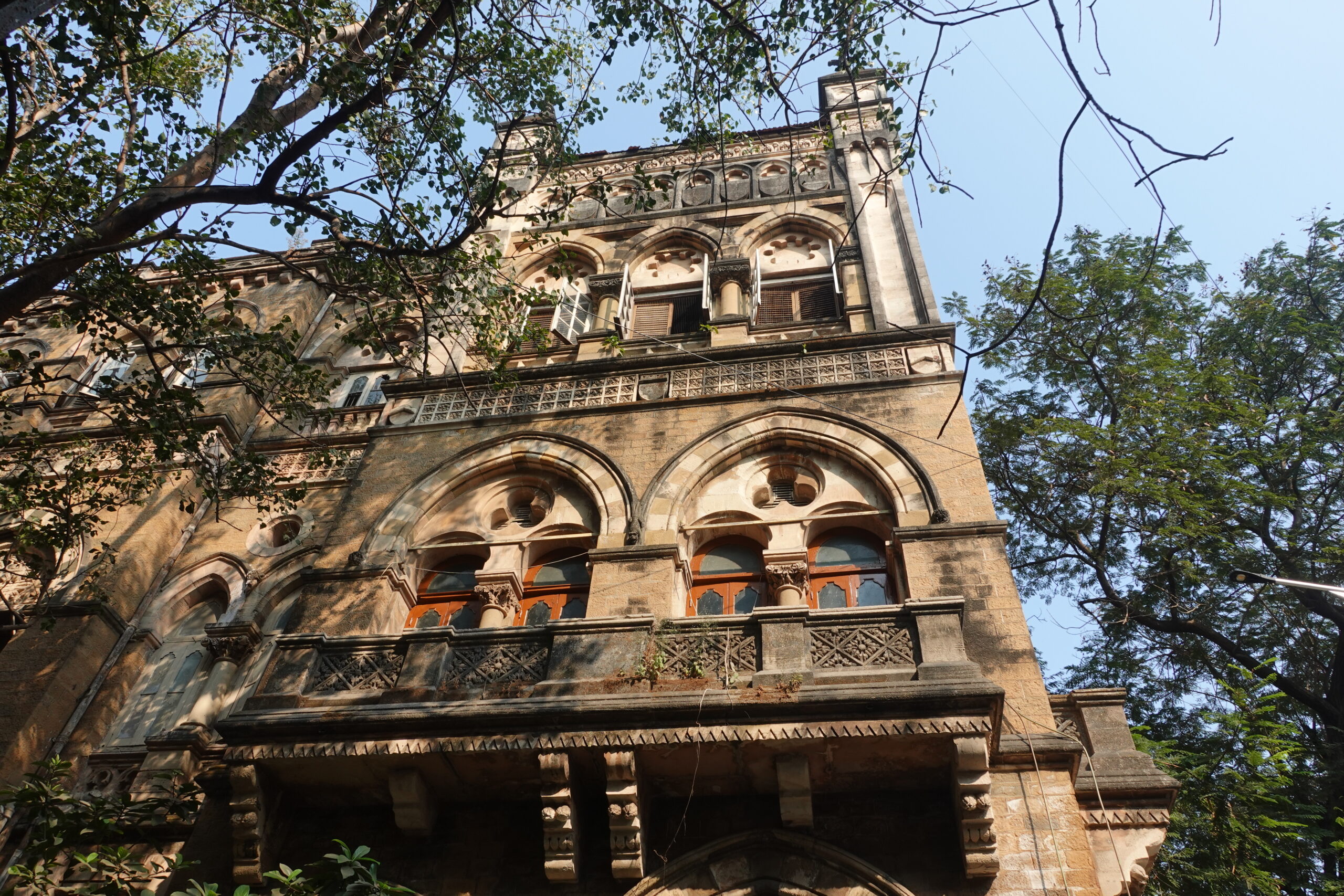
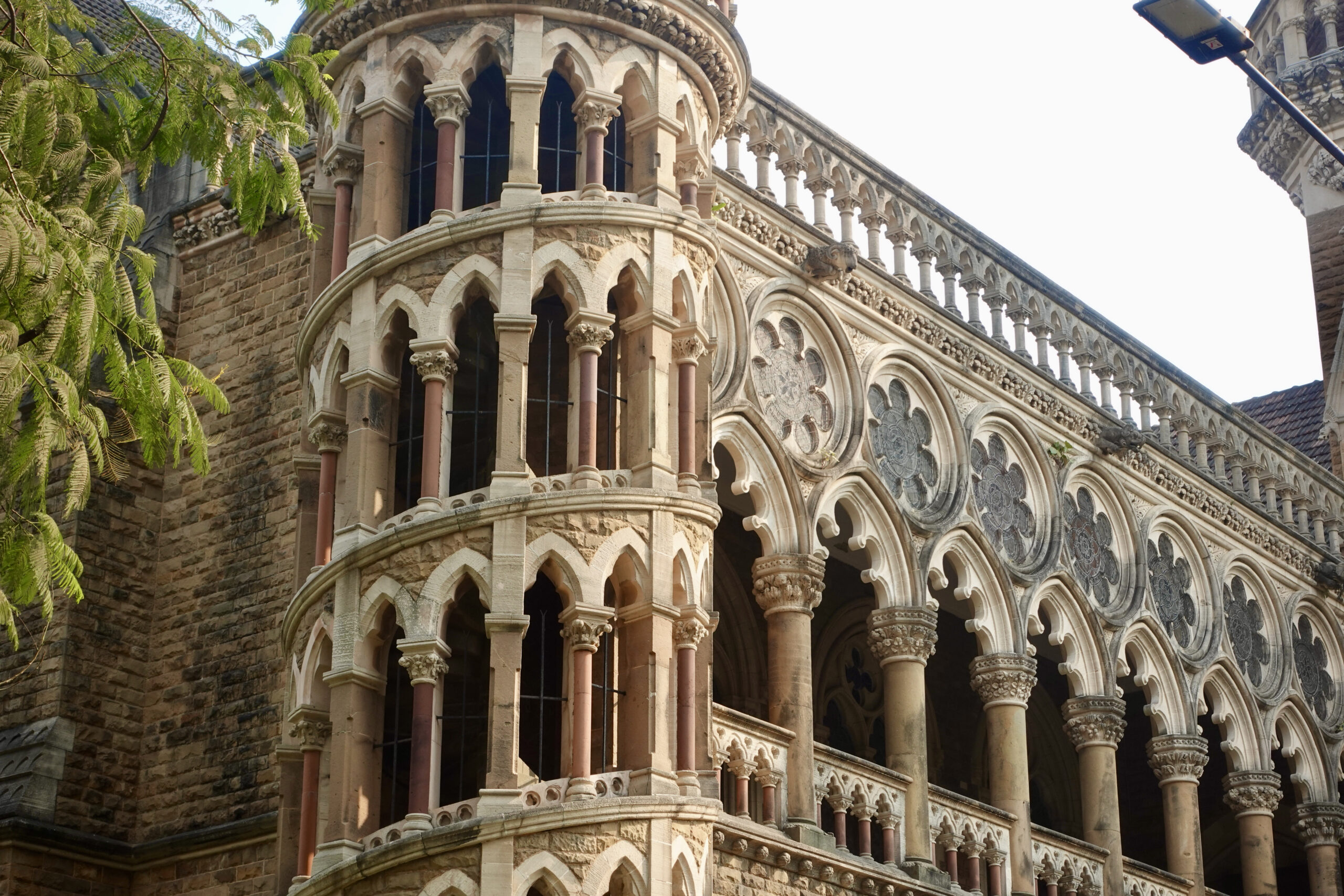
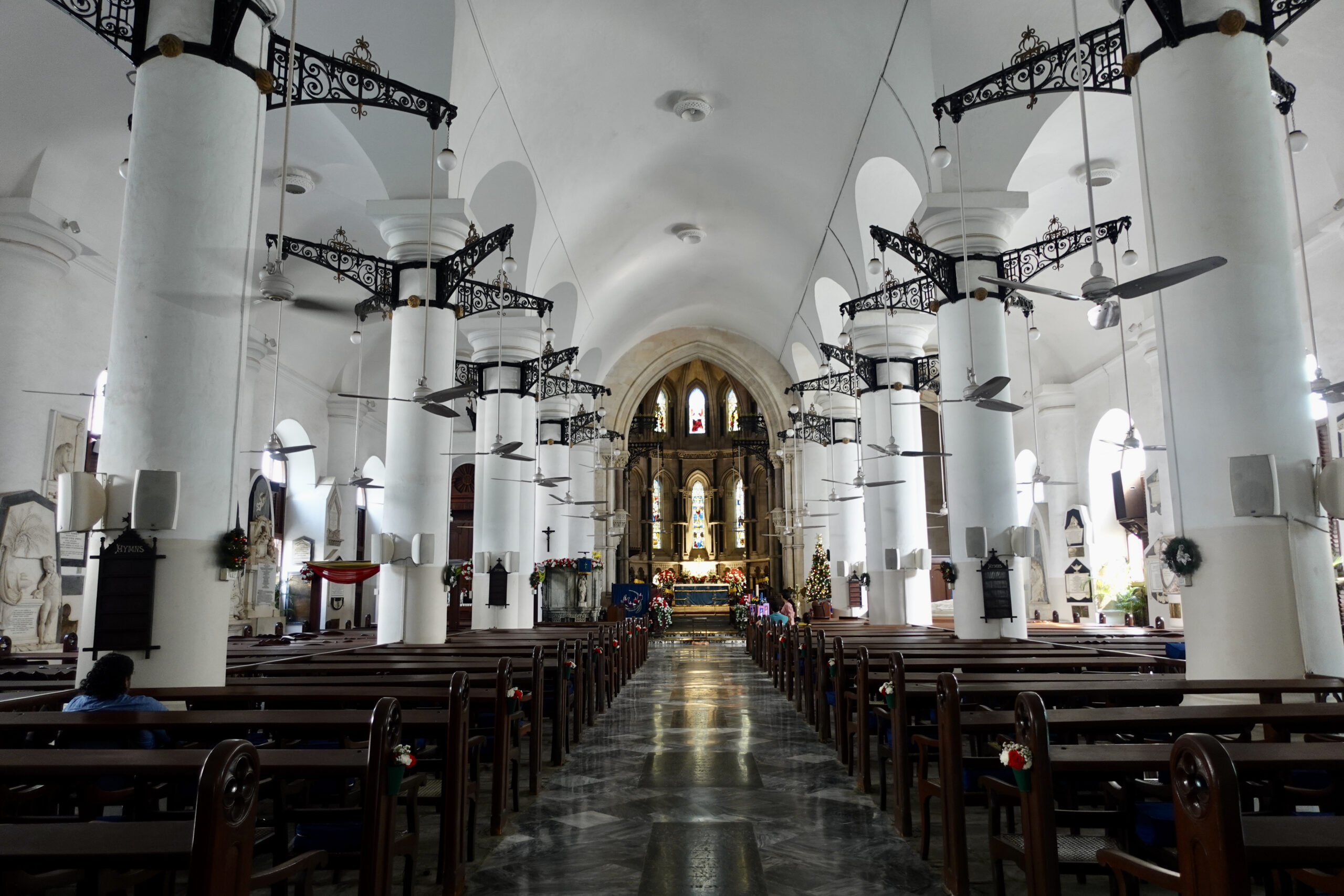
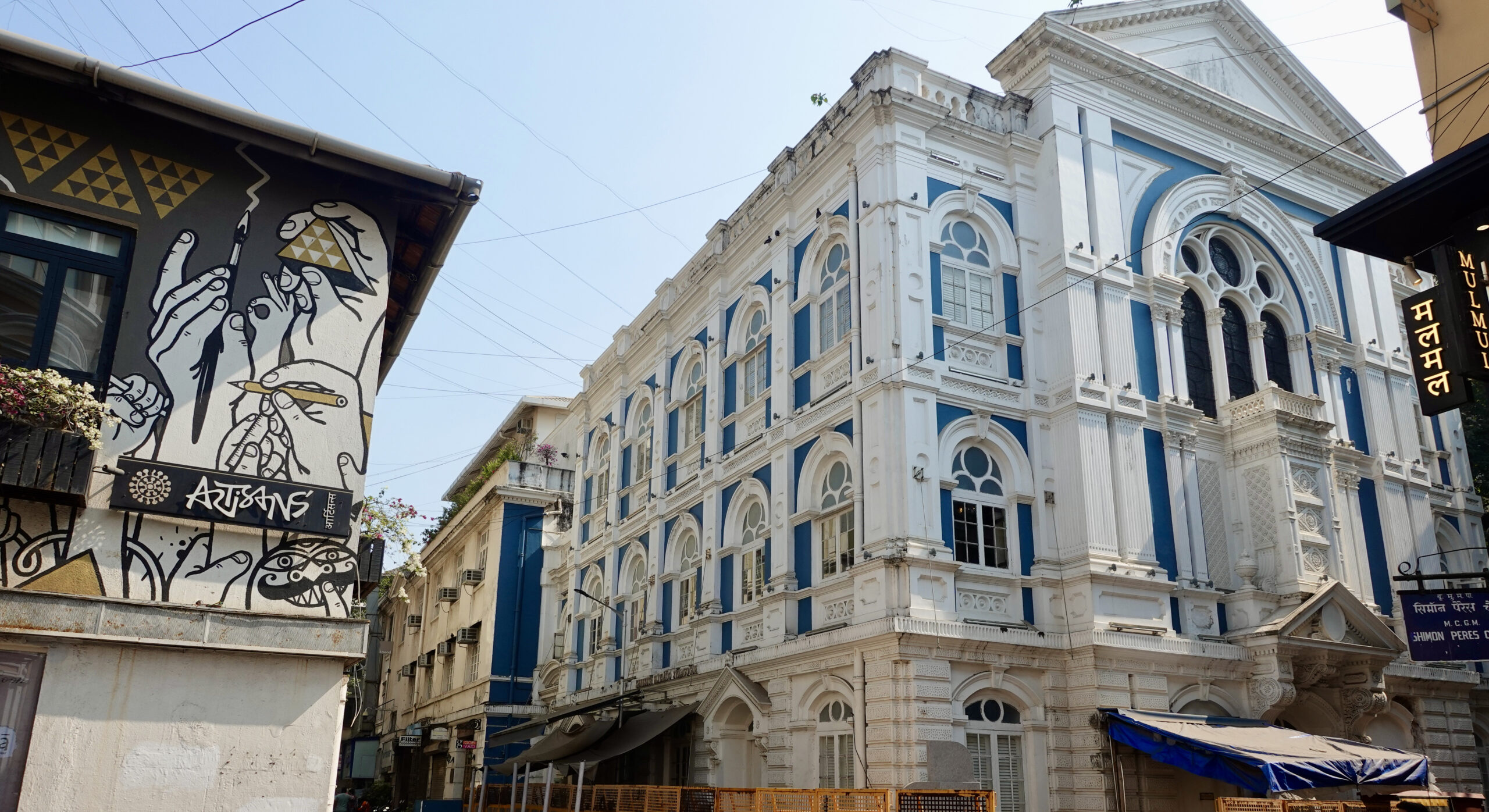
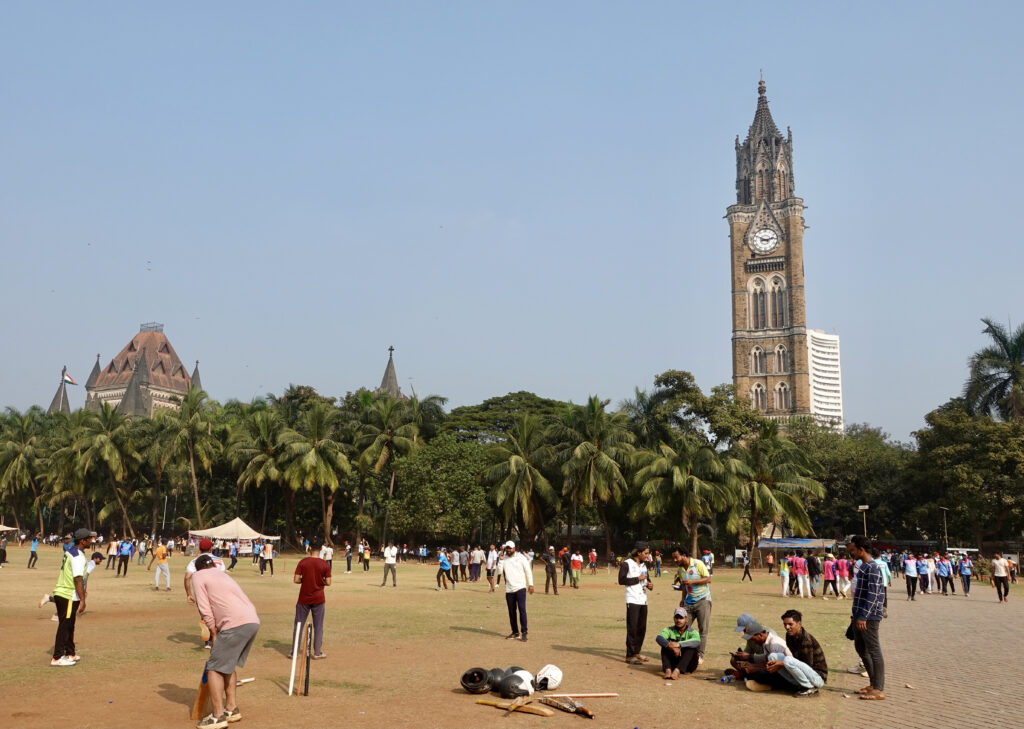
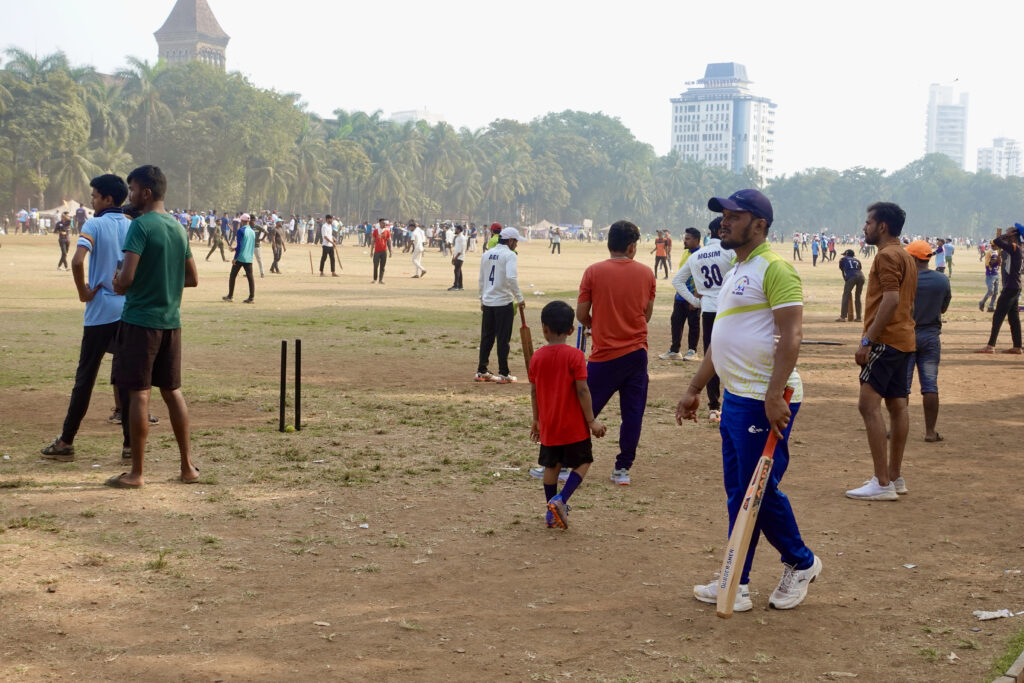
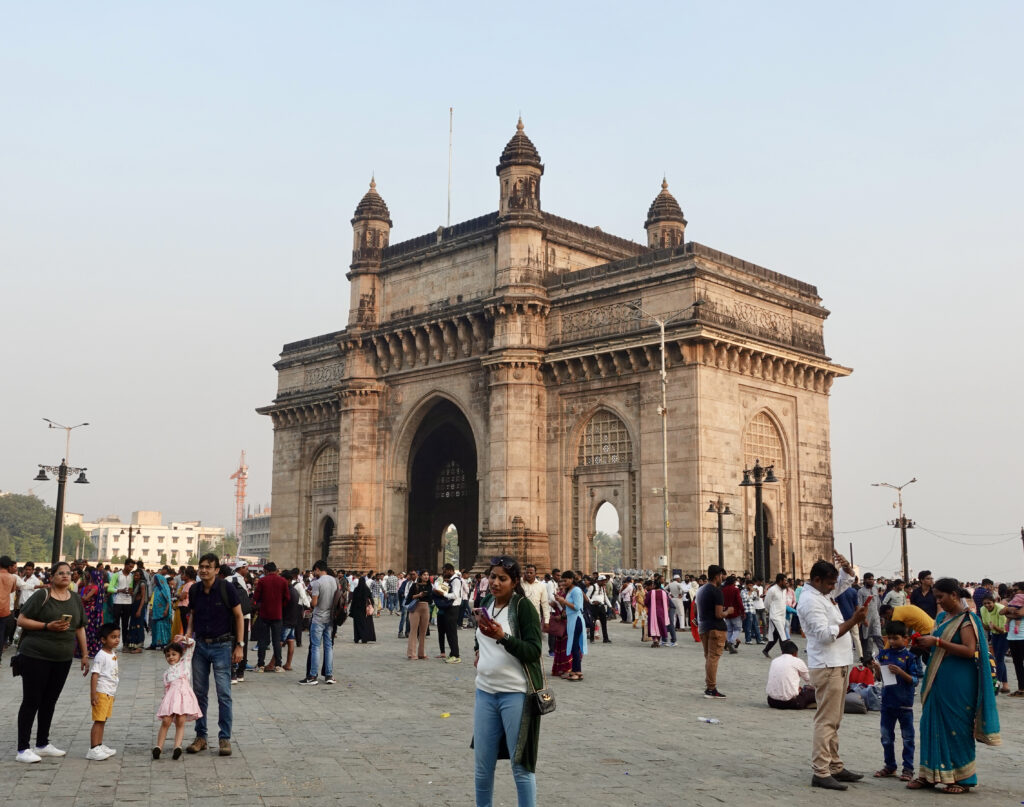
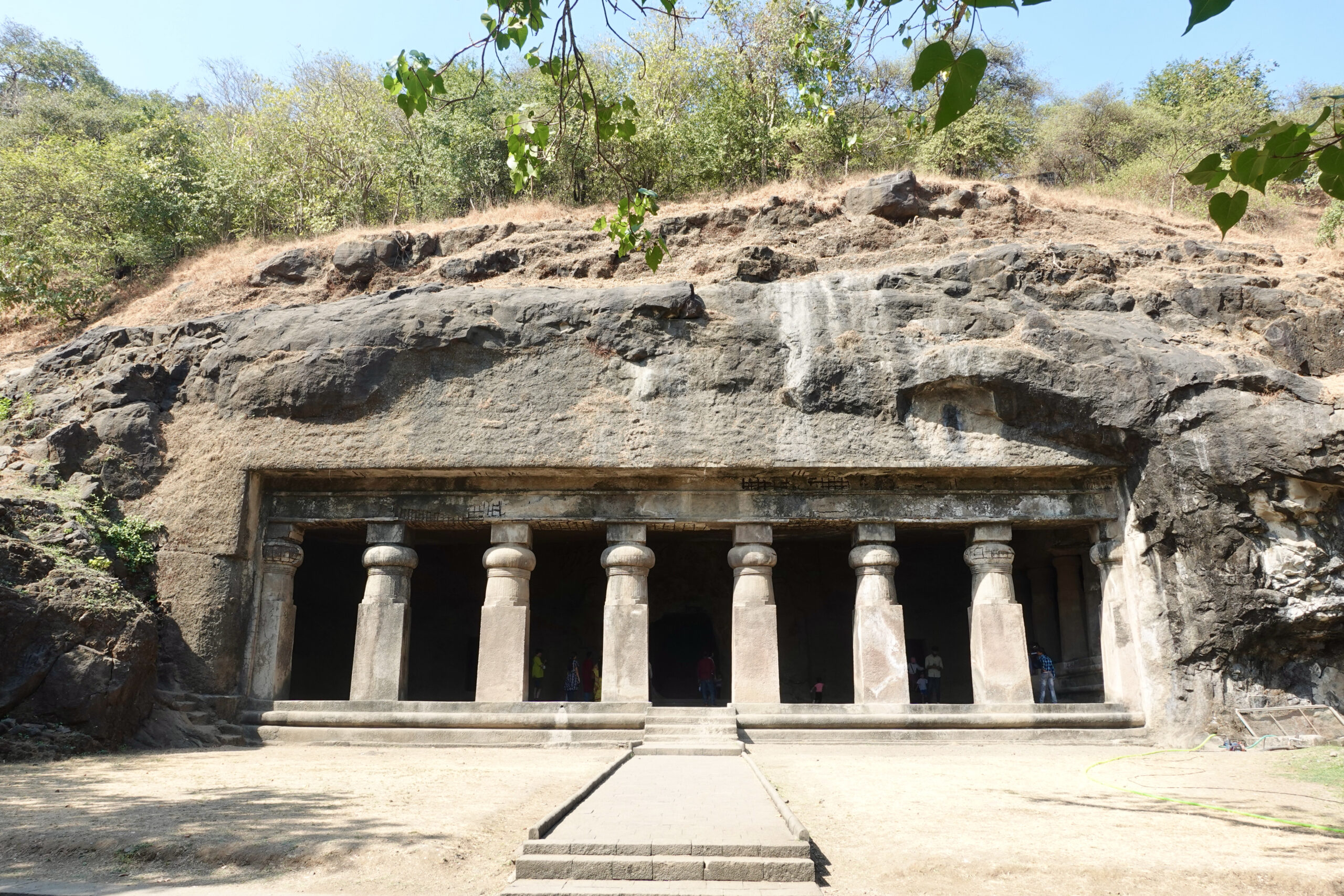
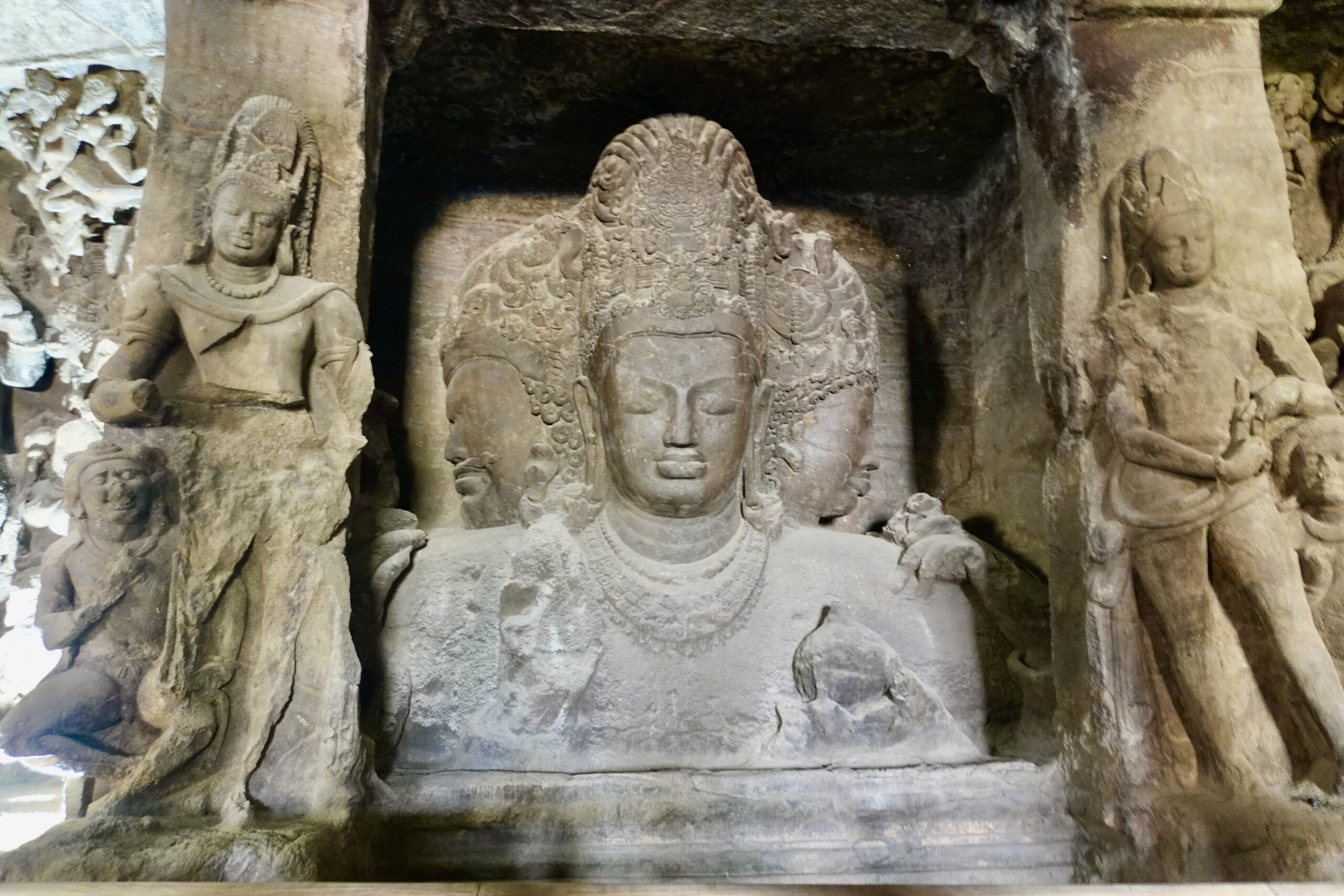
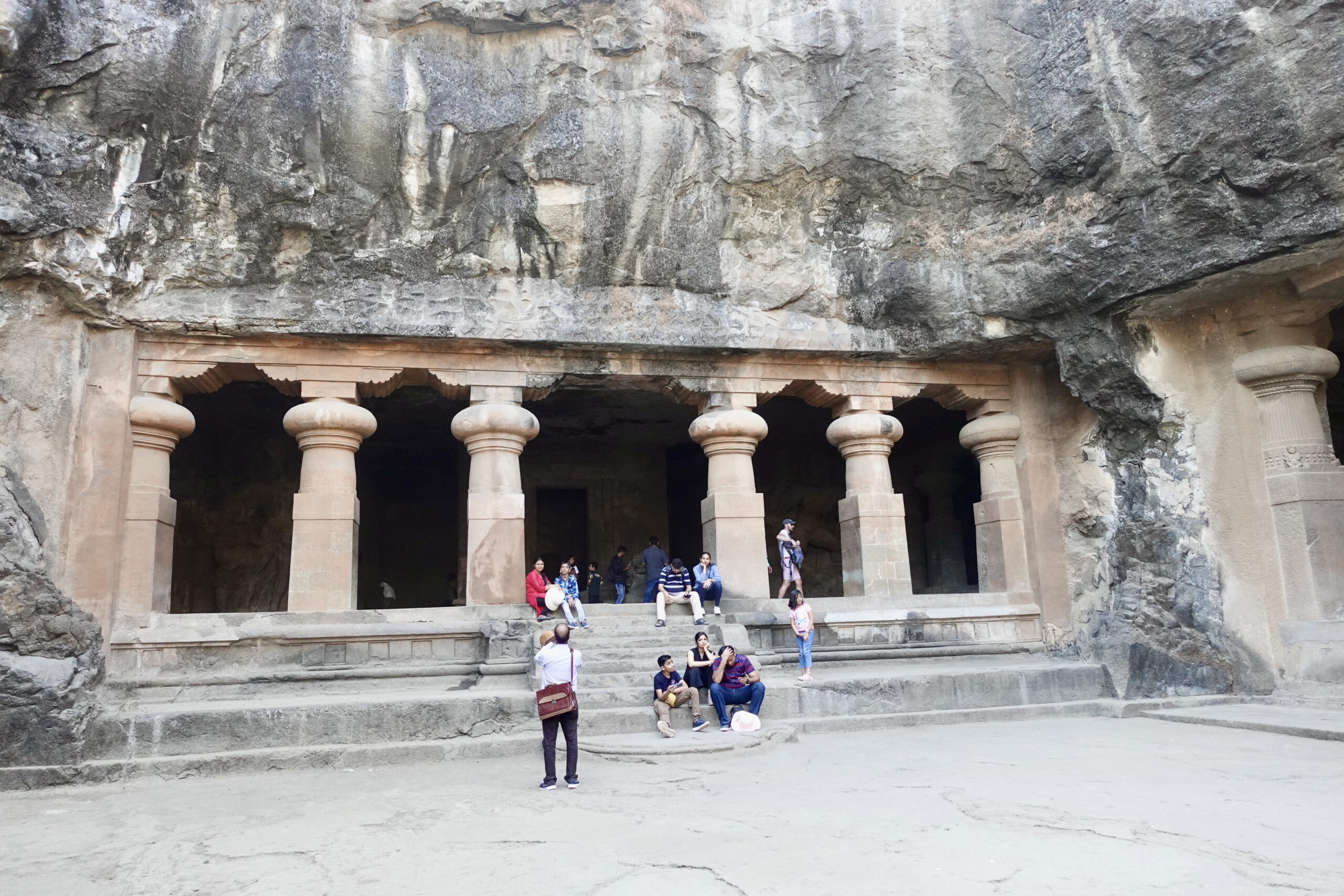
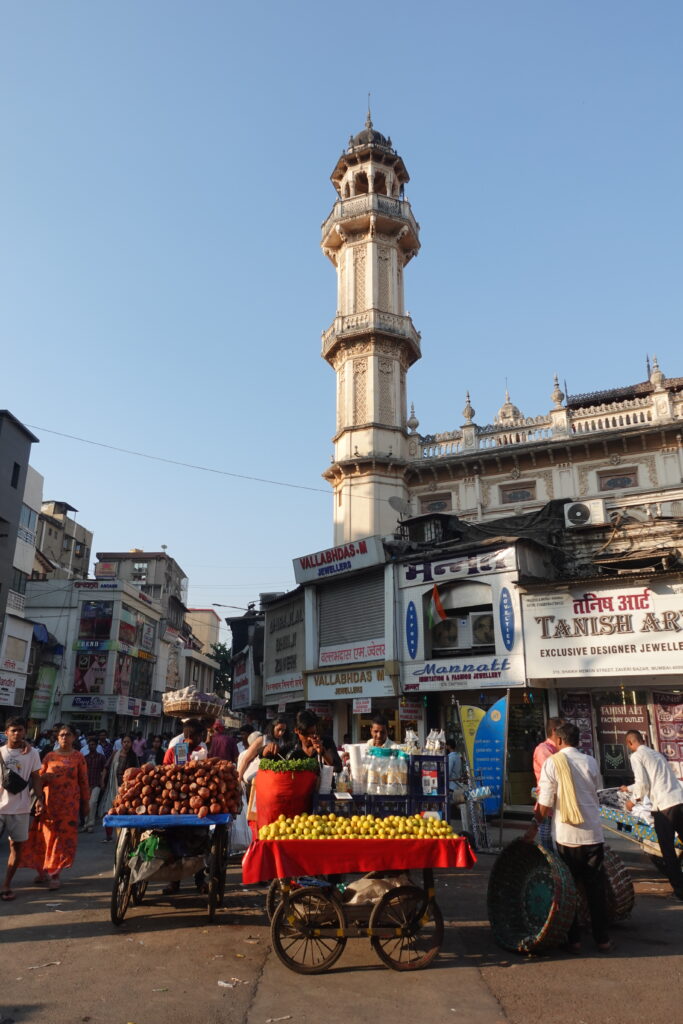
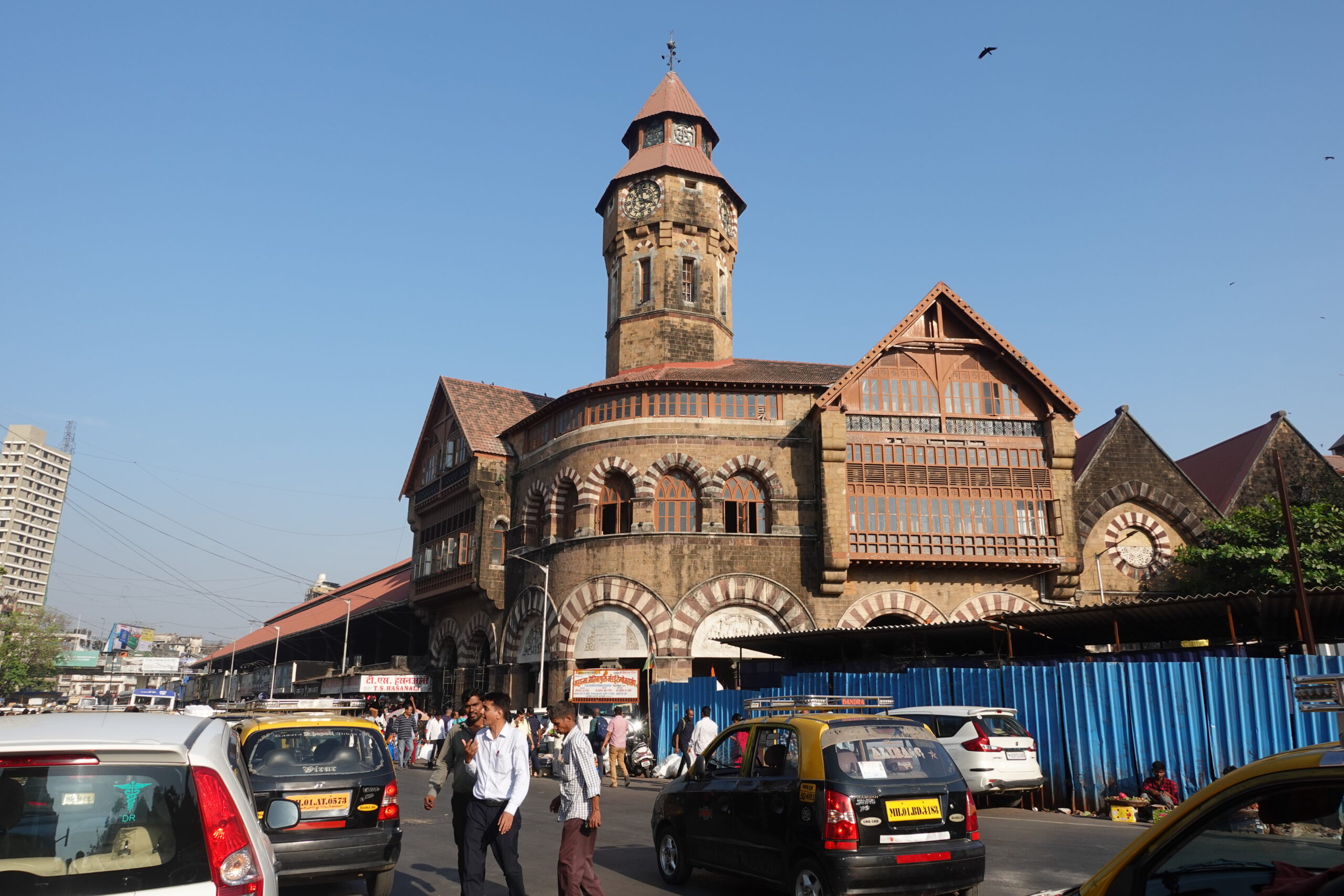
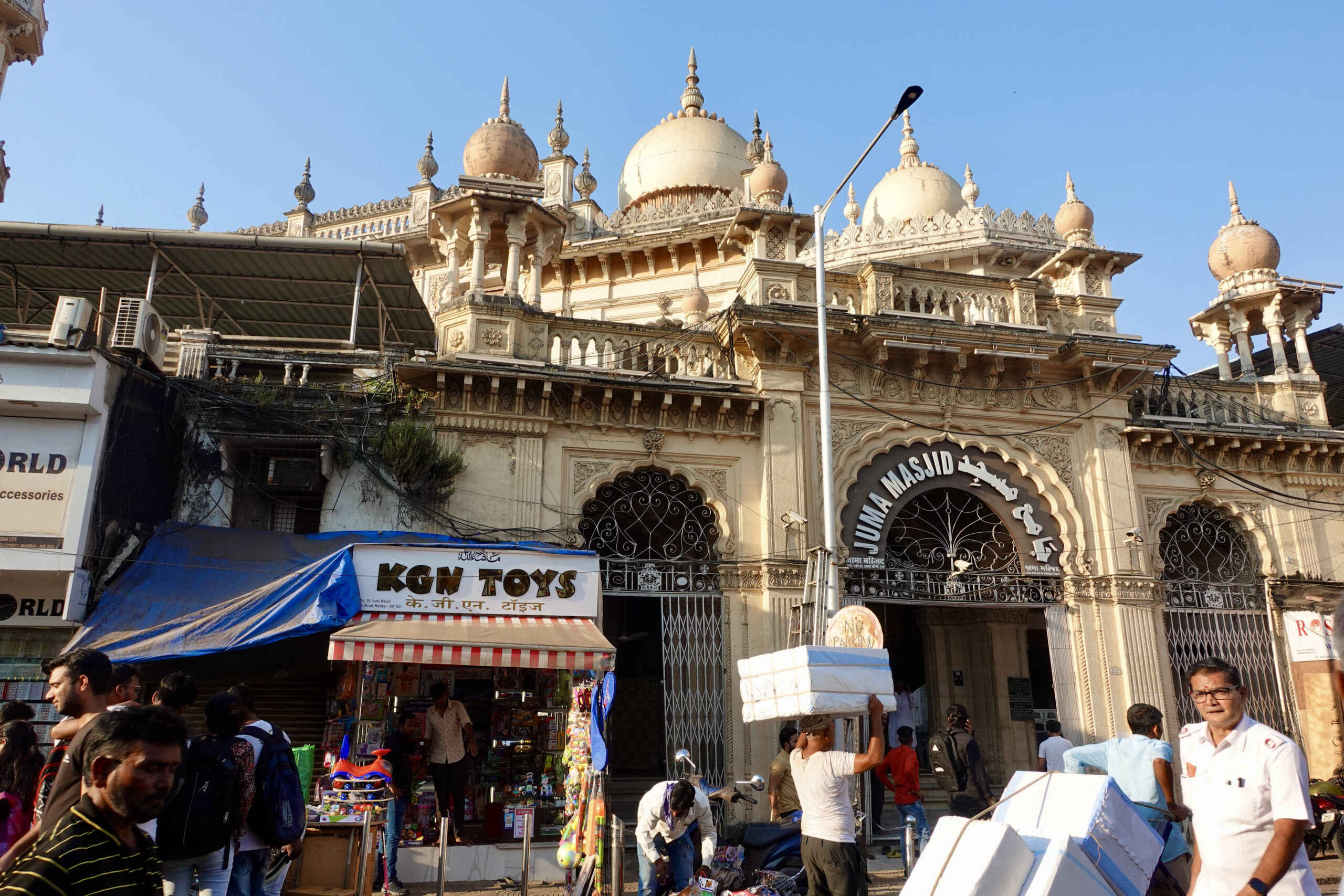
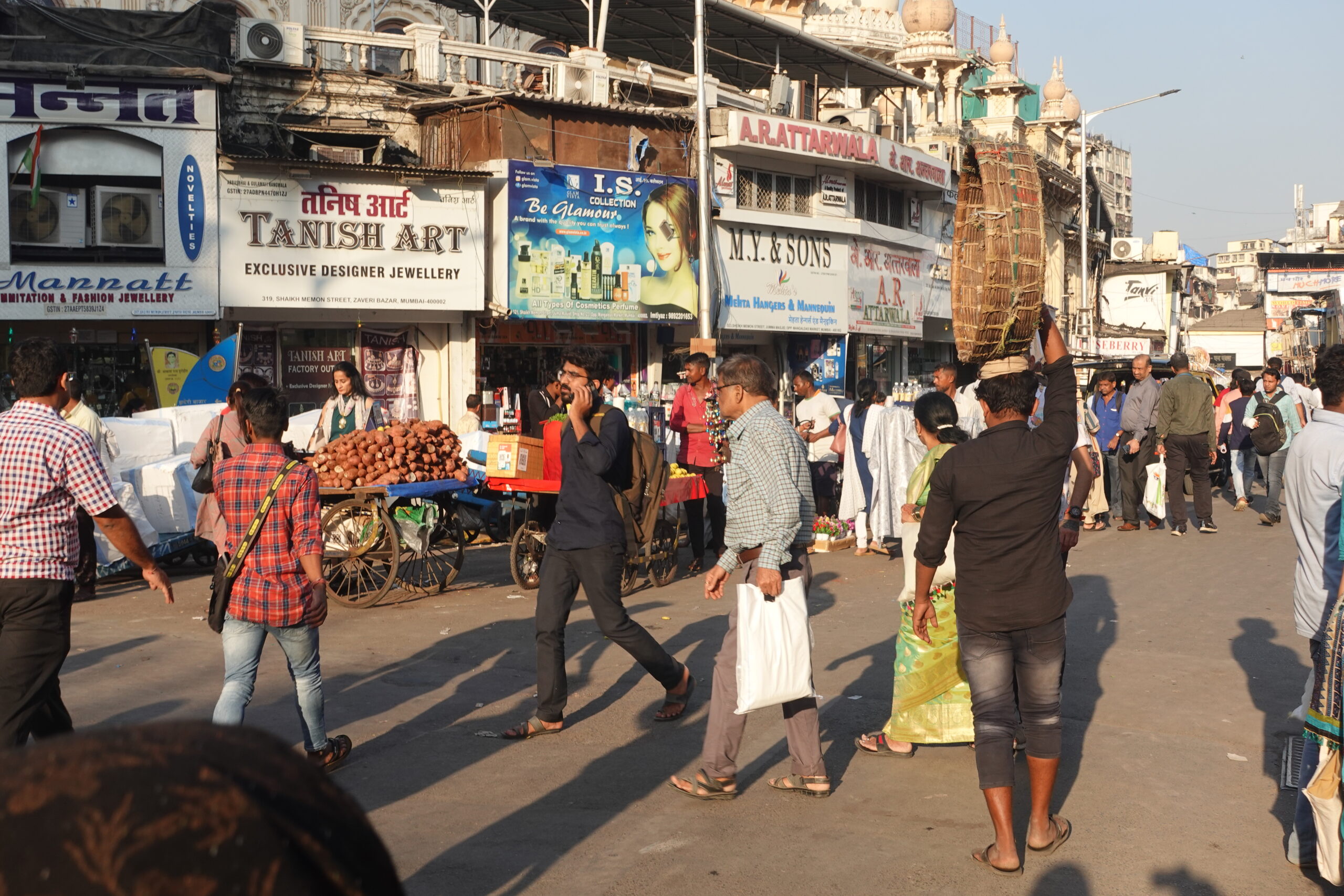
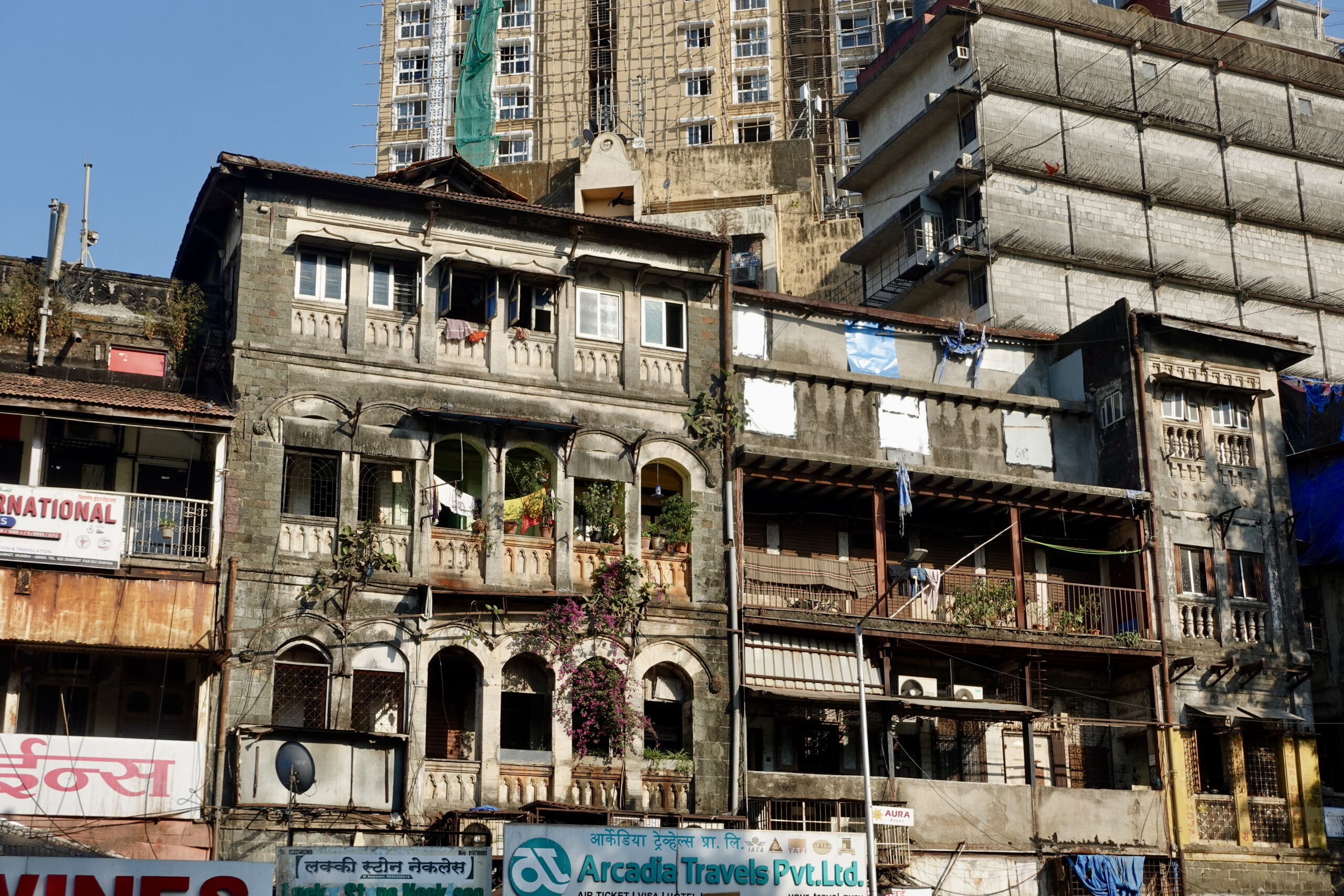
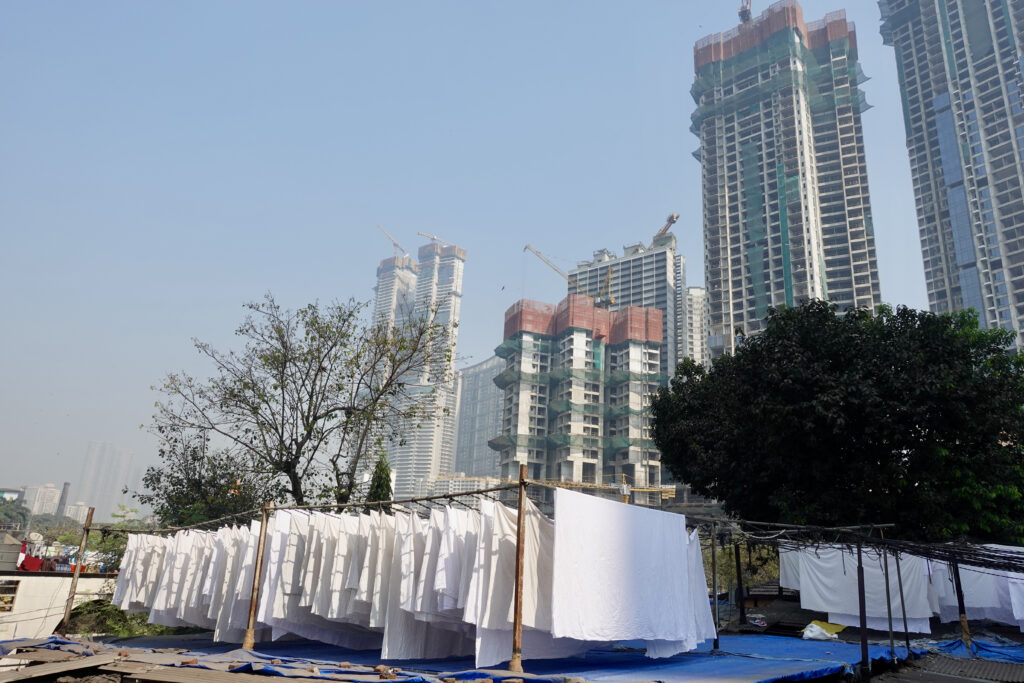
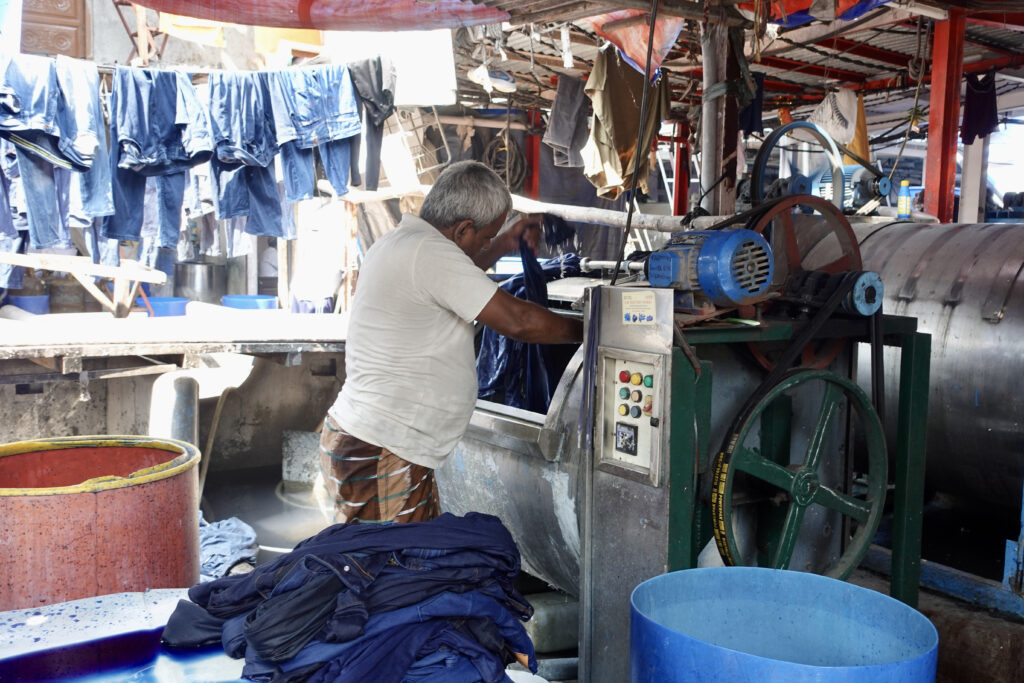

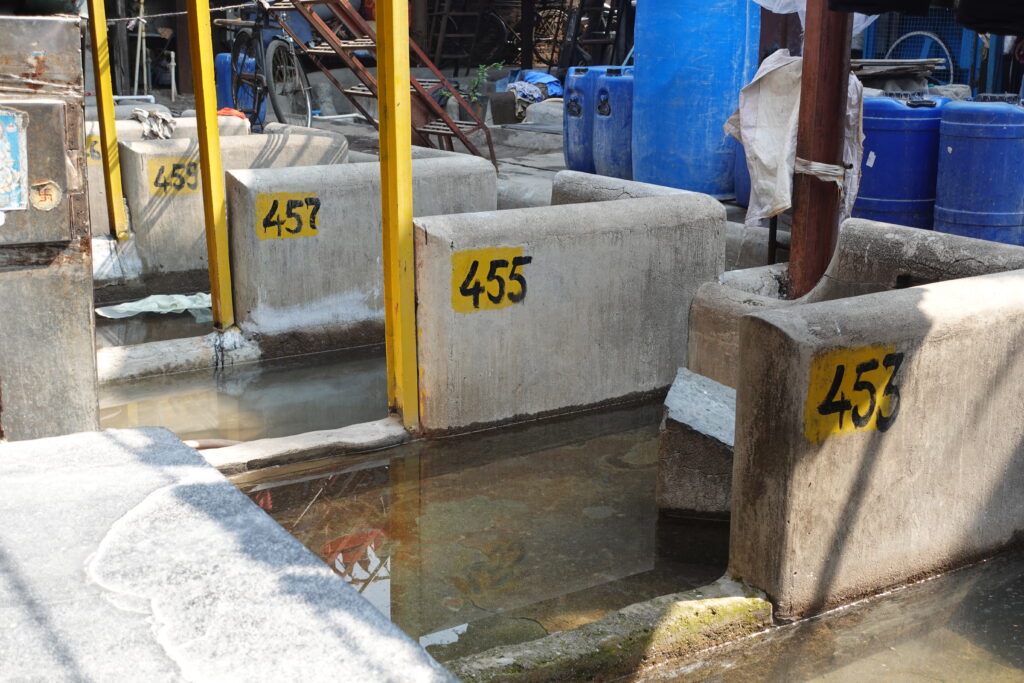
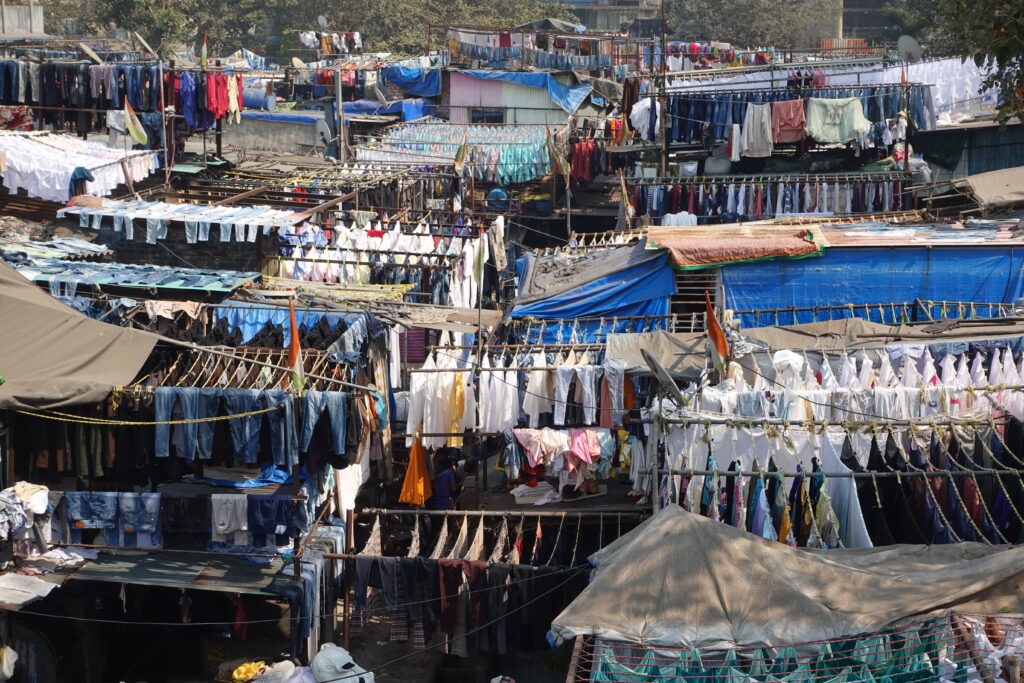

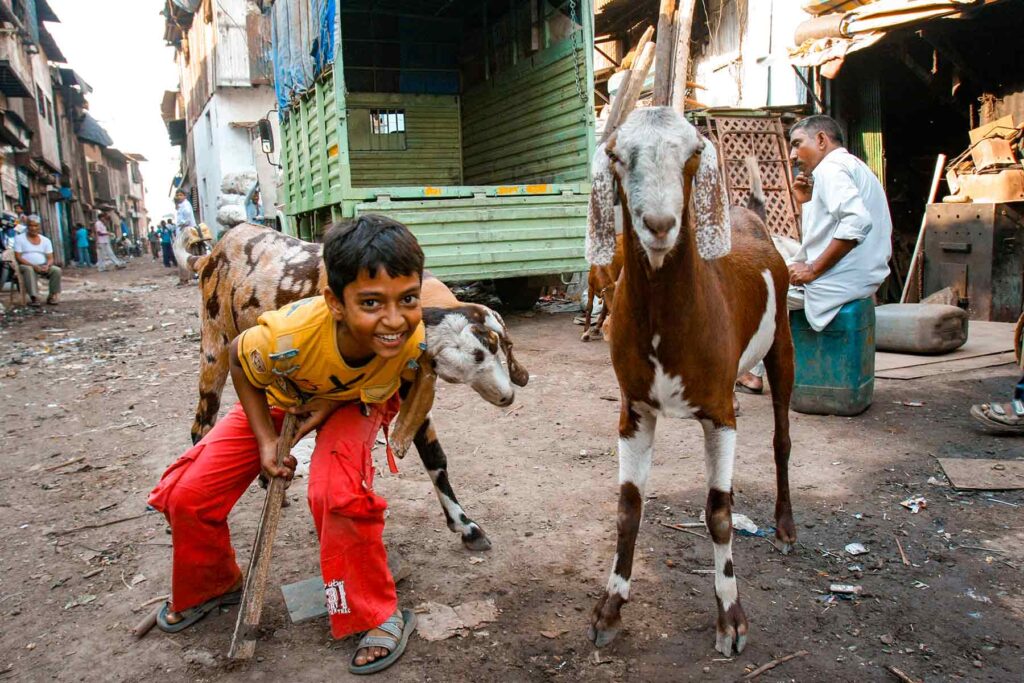

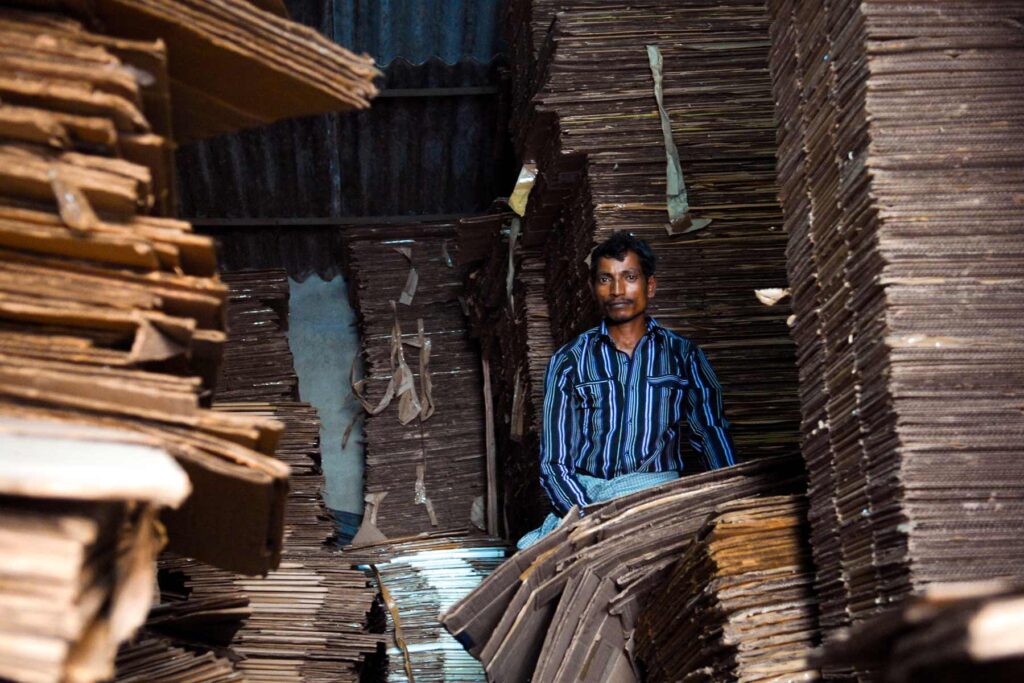
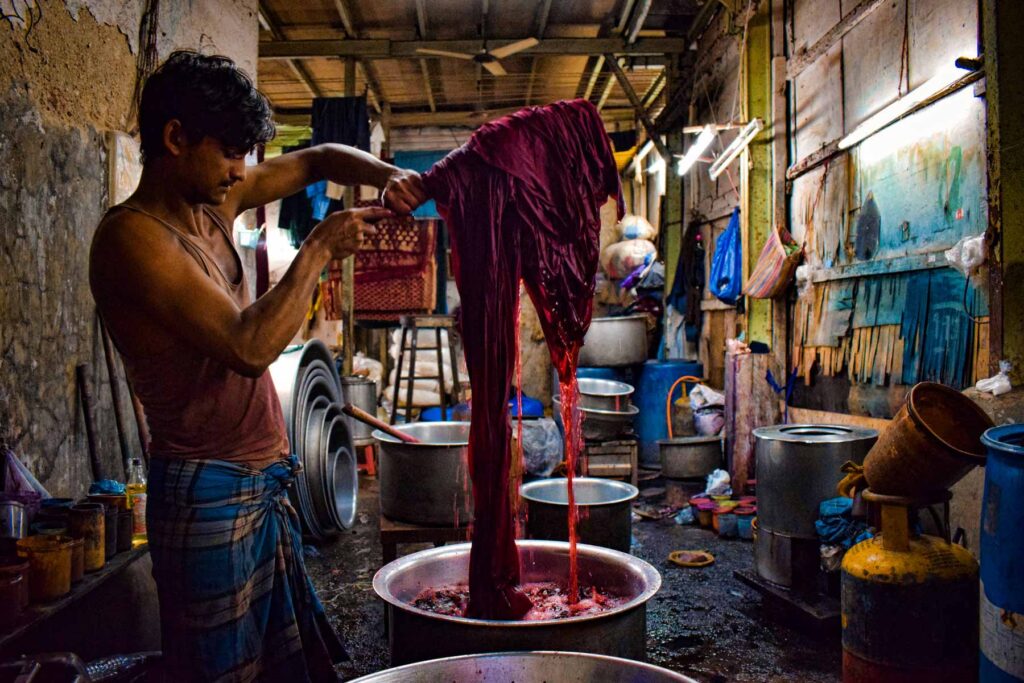
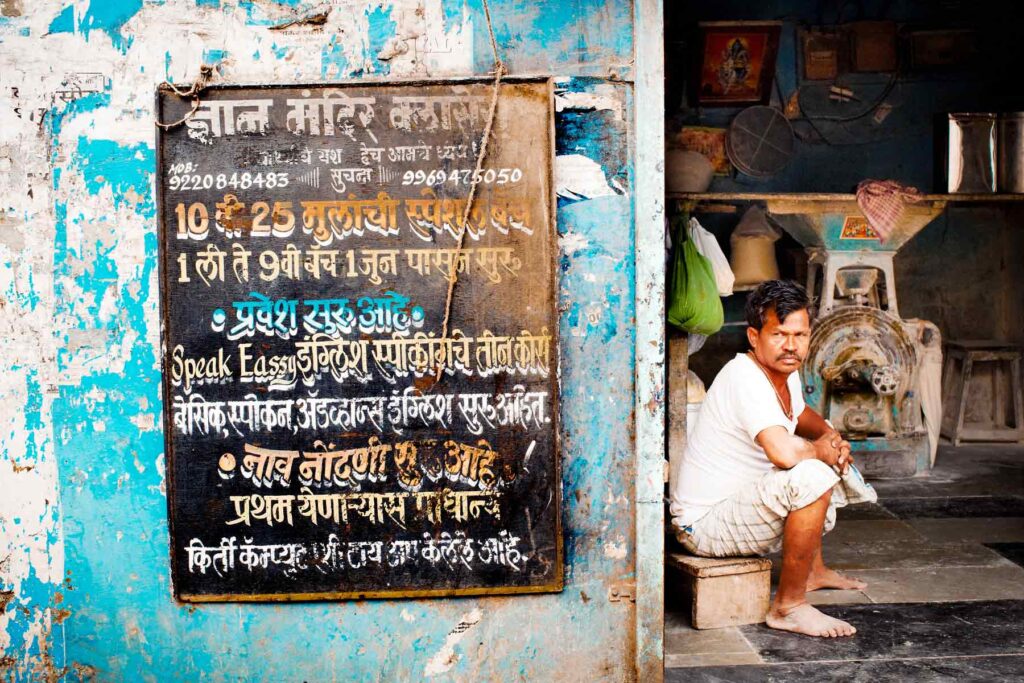
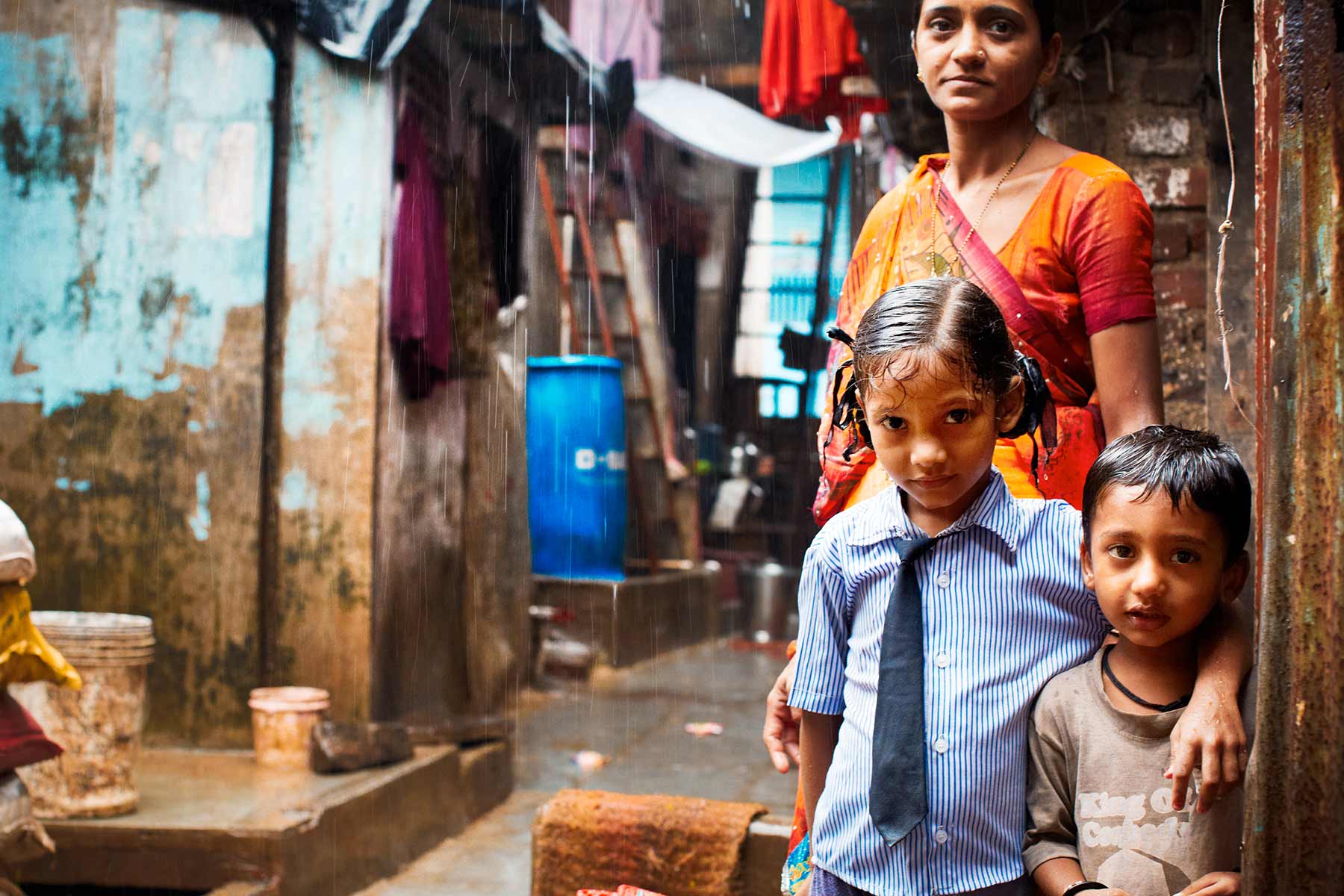
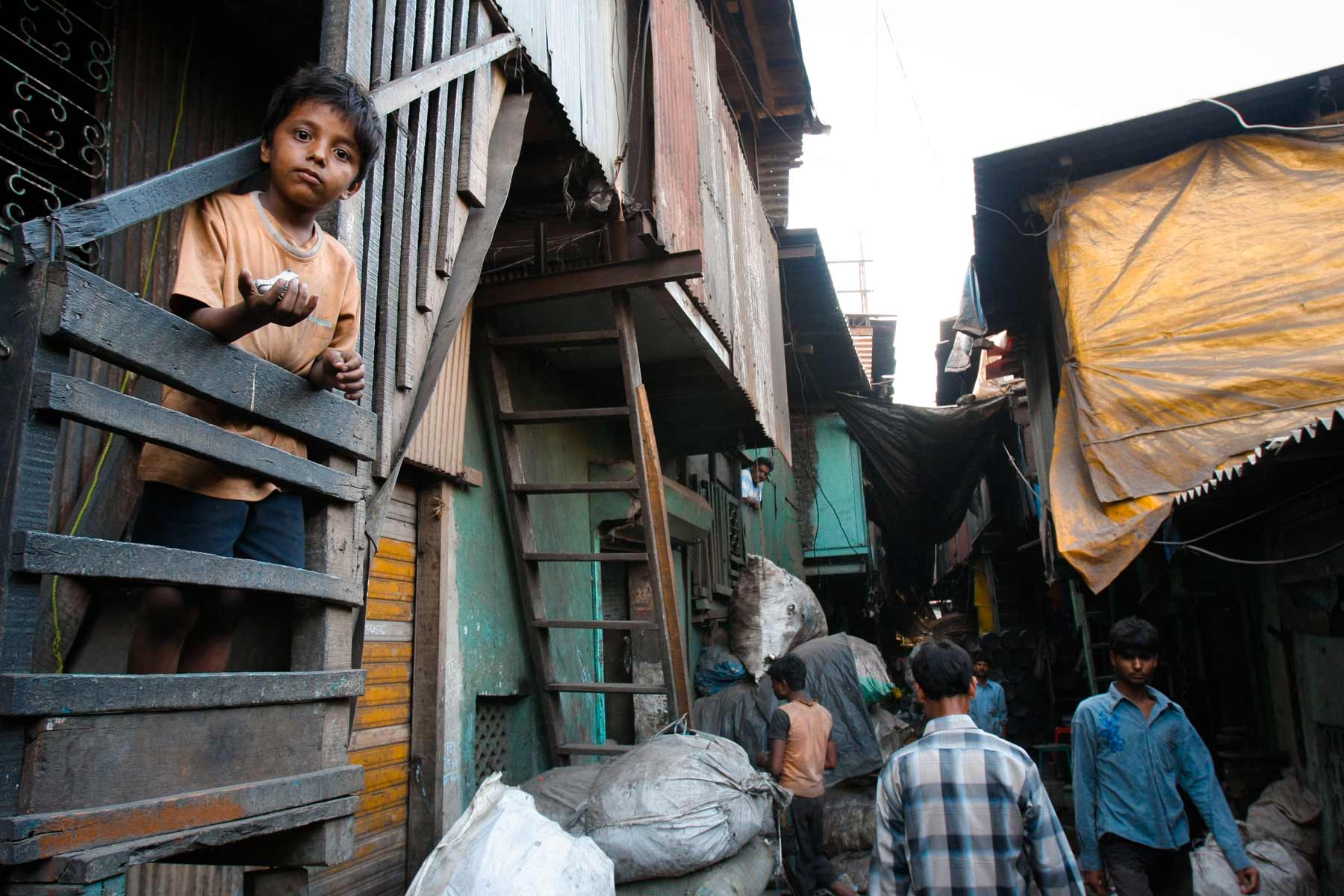
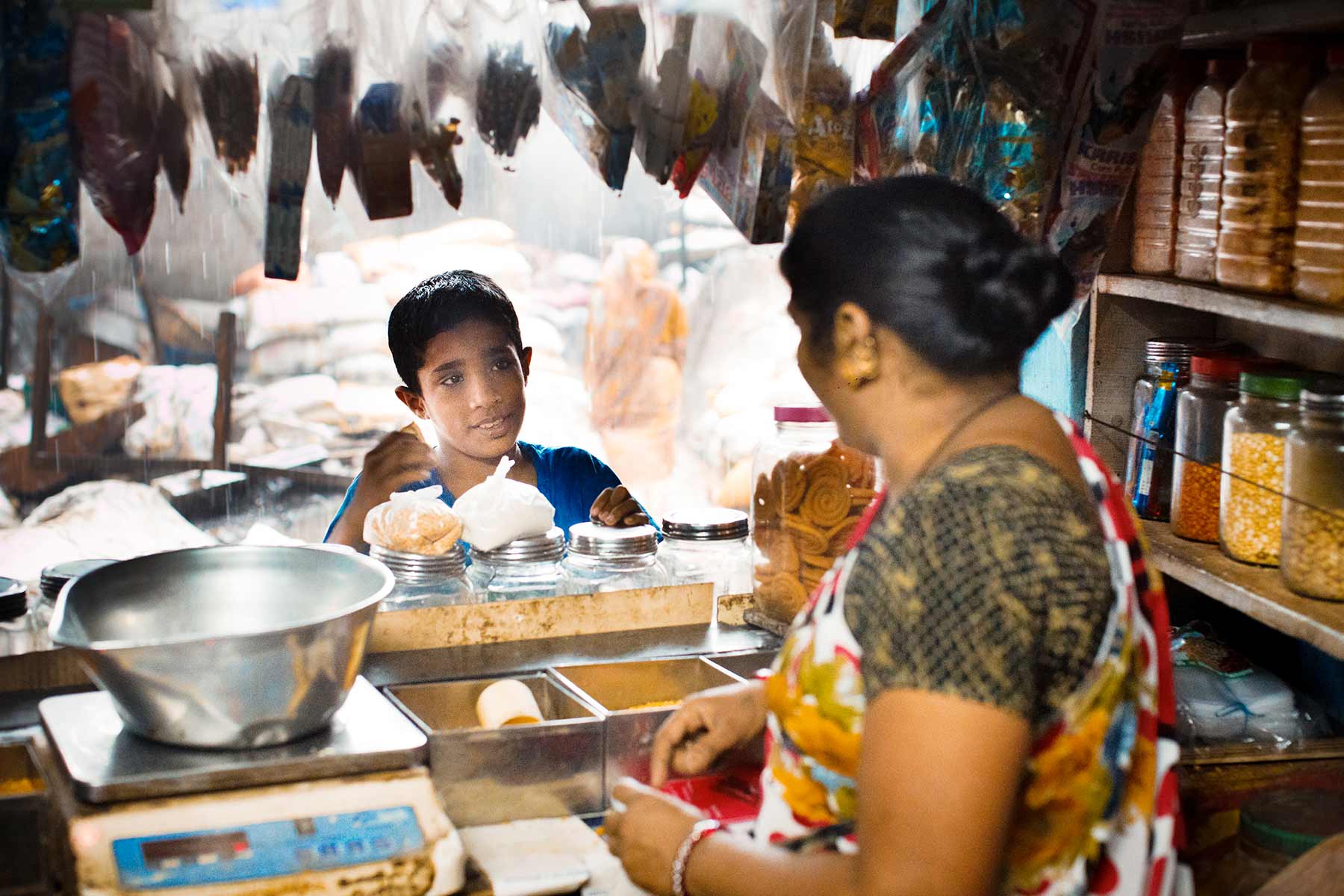
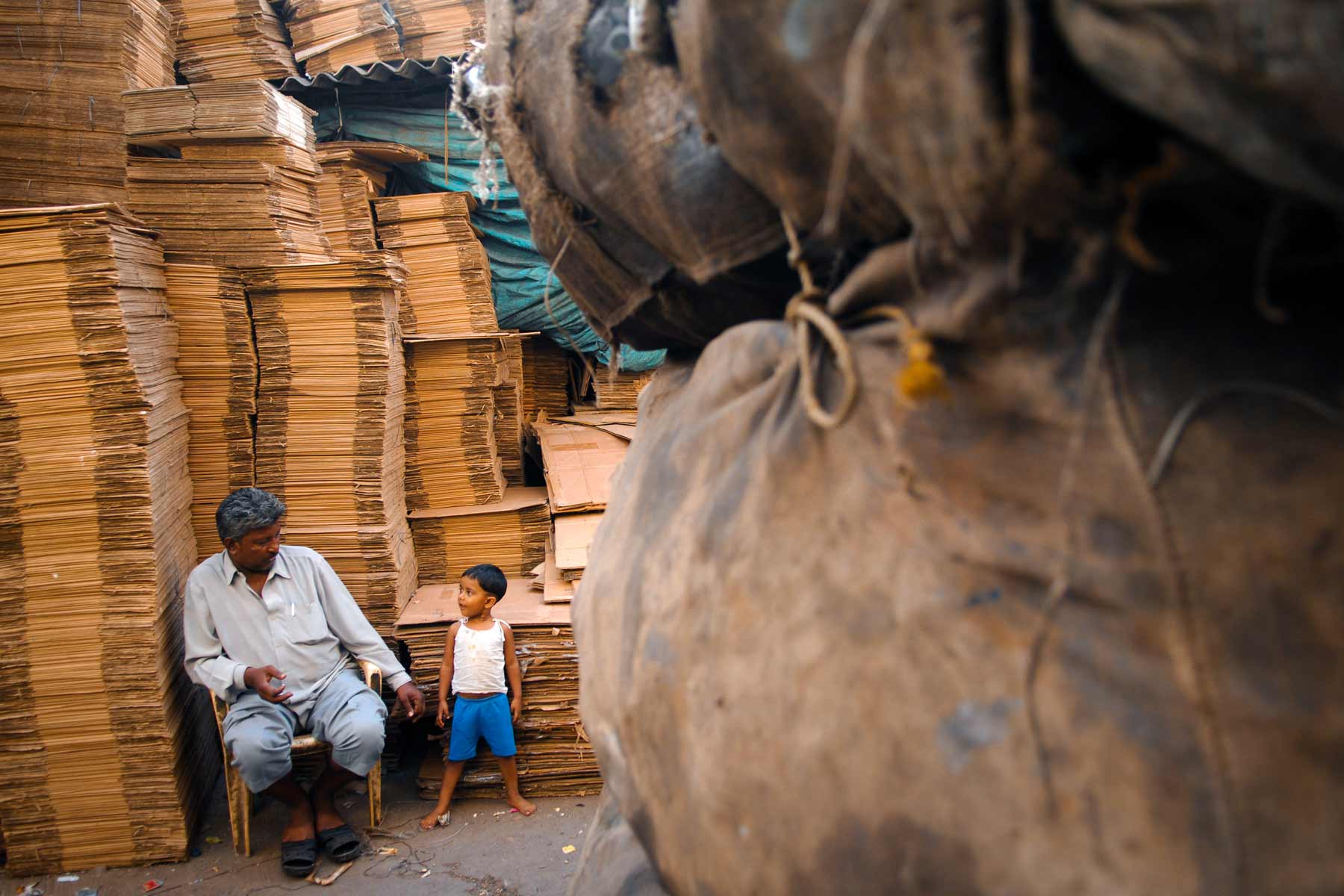
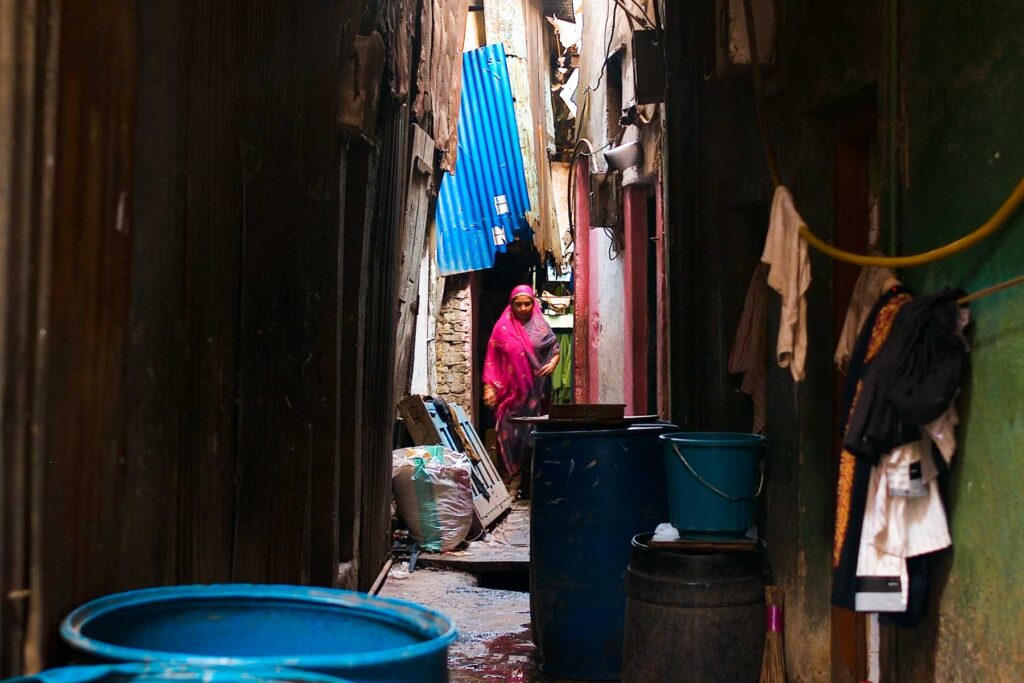
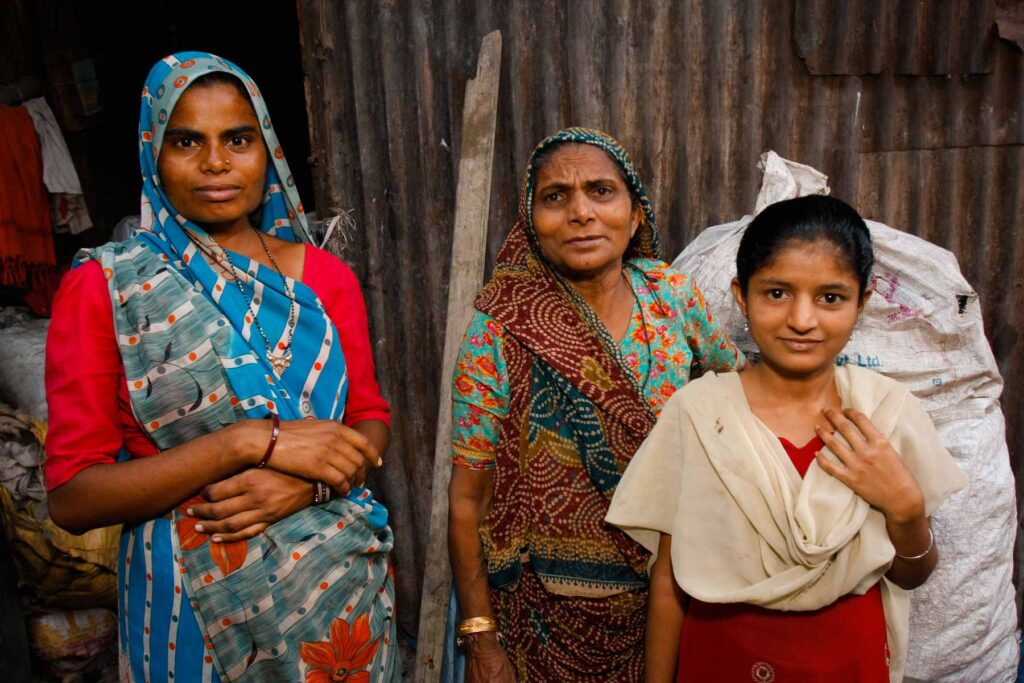

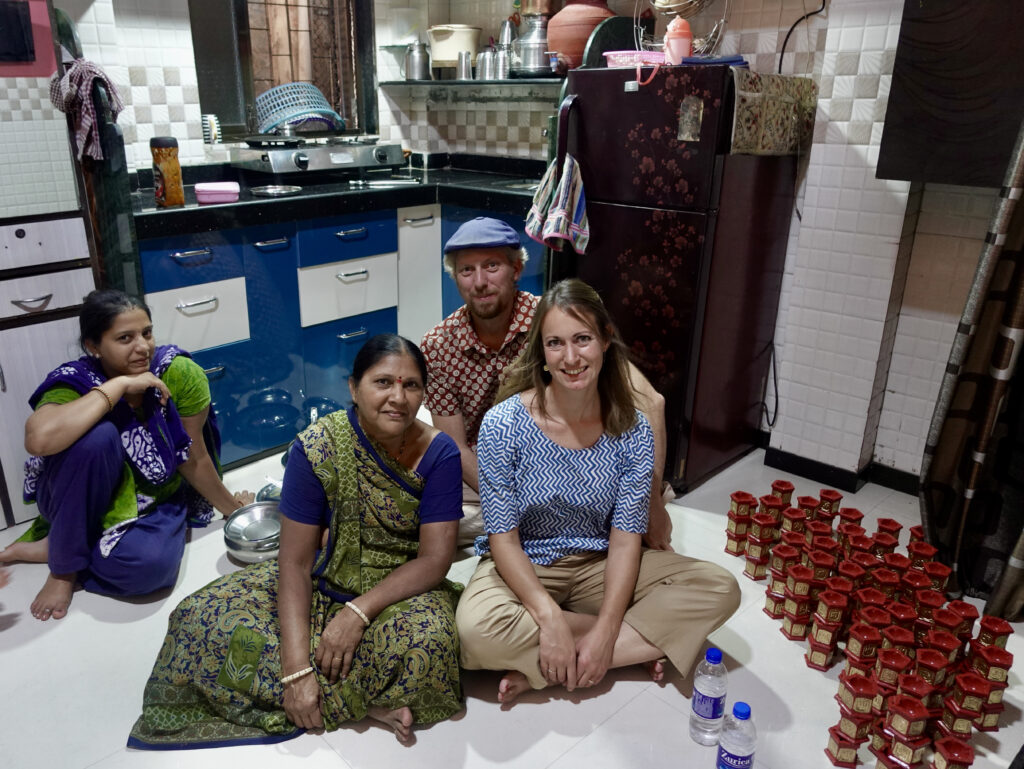

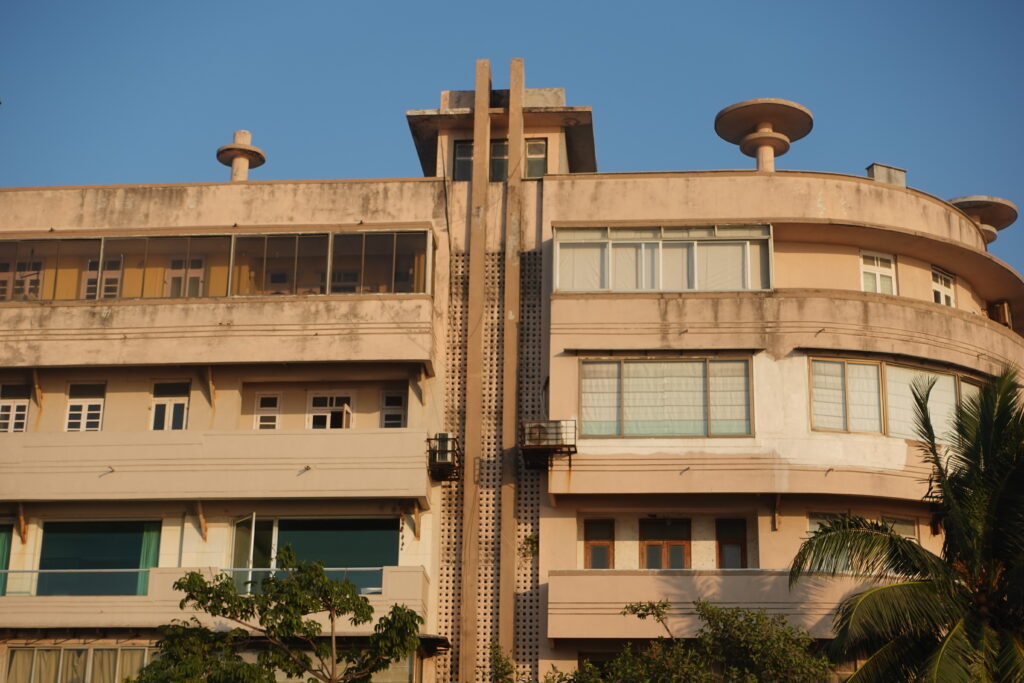
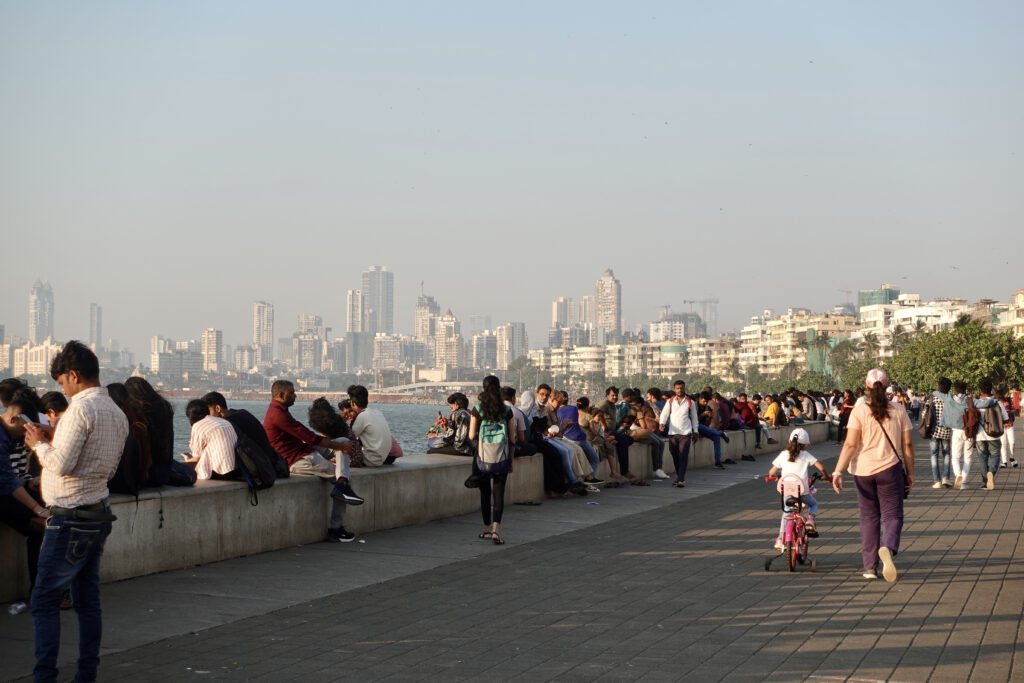
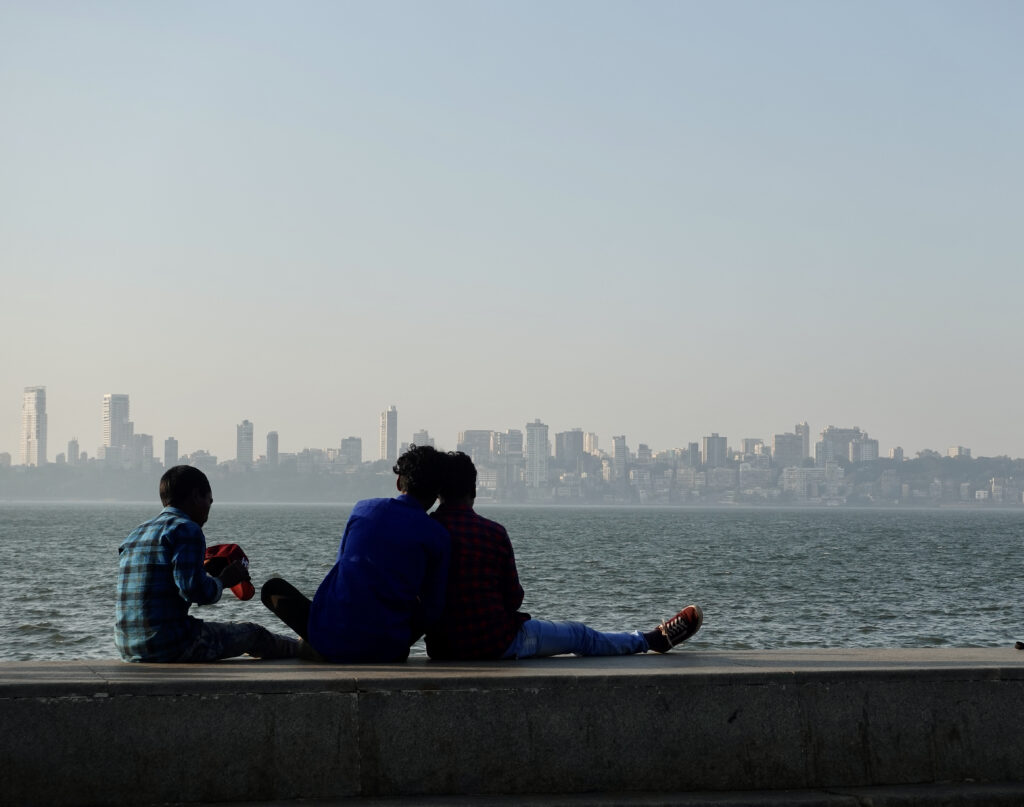



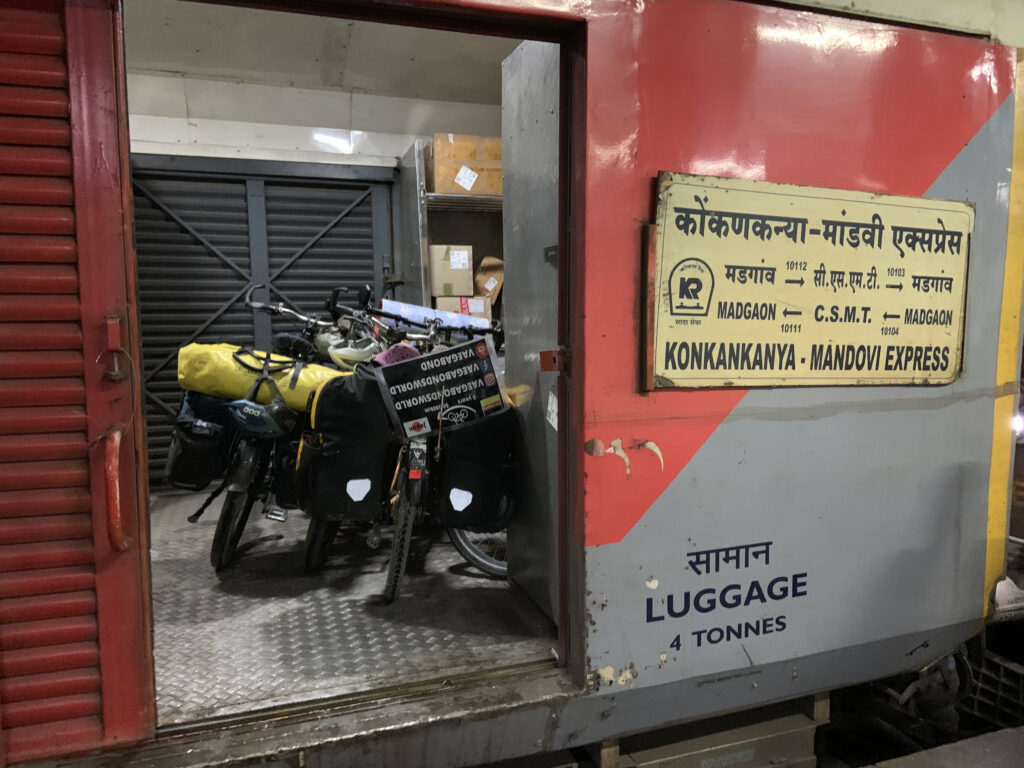
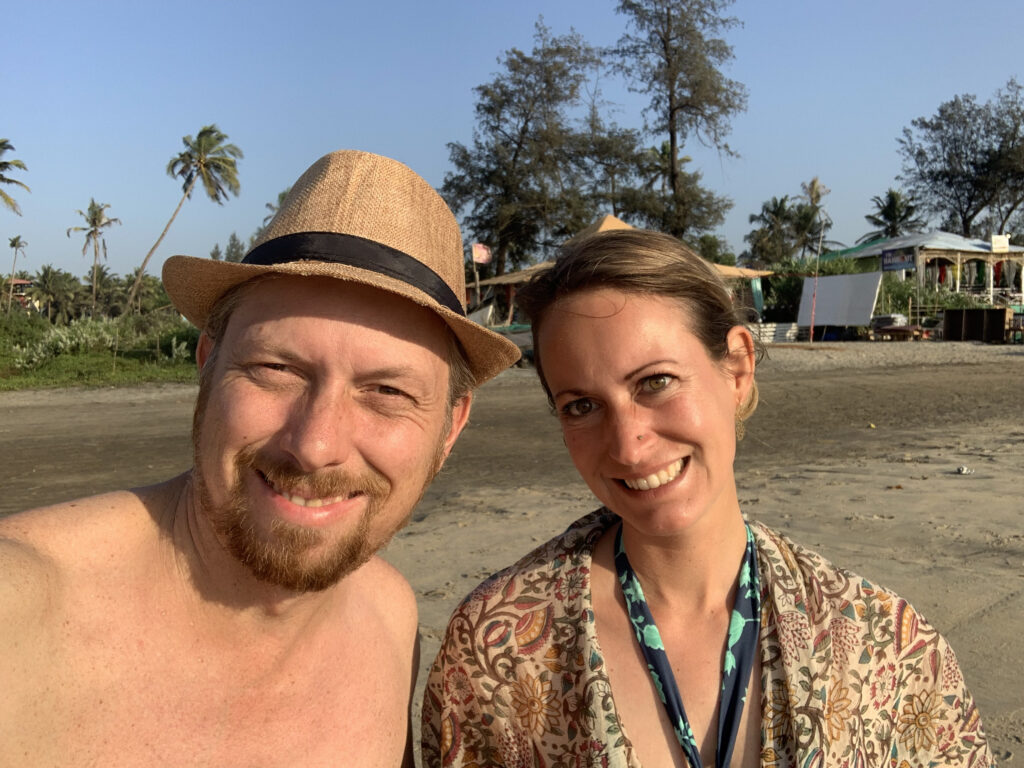
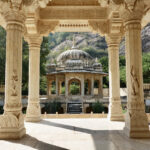
Leave a Reply